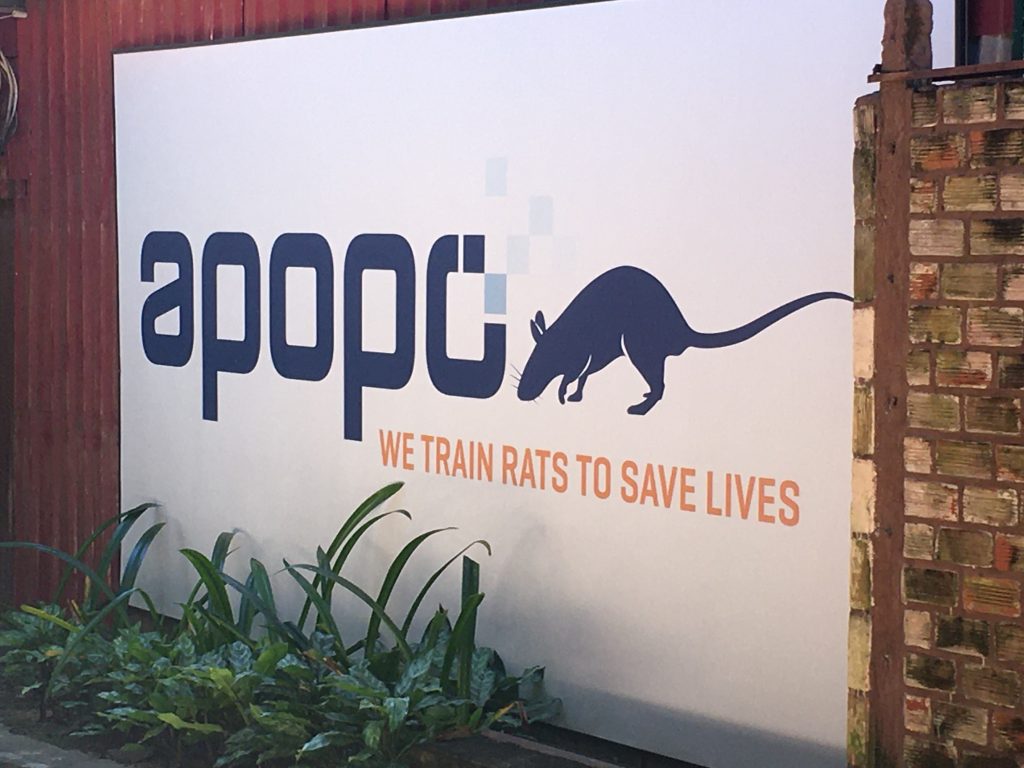Many towers and small temples spread out across from the Terrace of the Elephants and of the Leper King. Some parts date 10th century, others from the 12th.
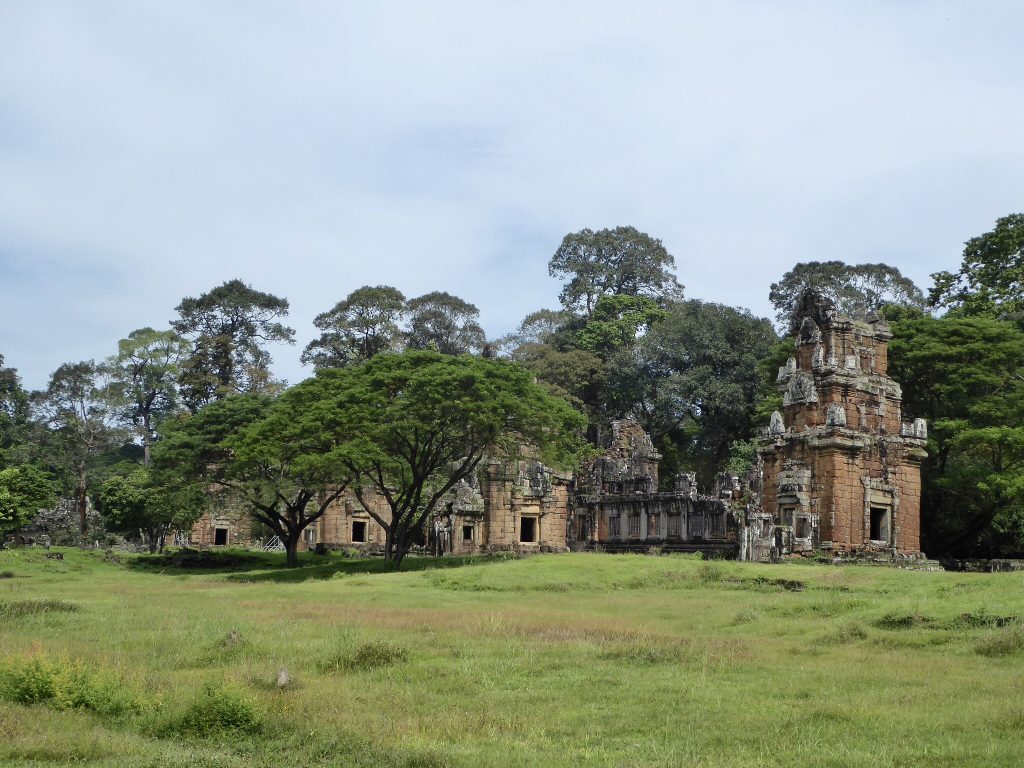
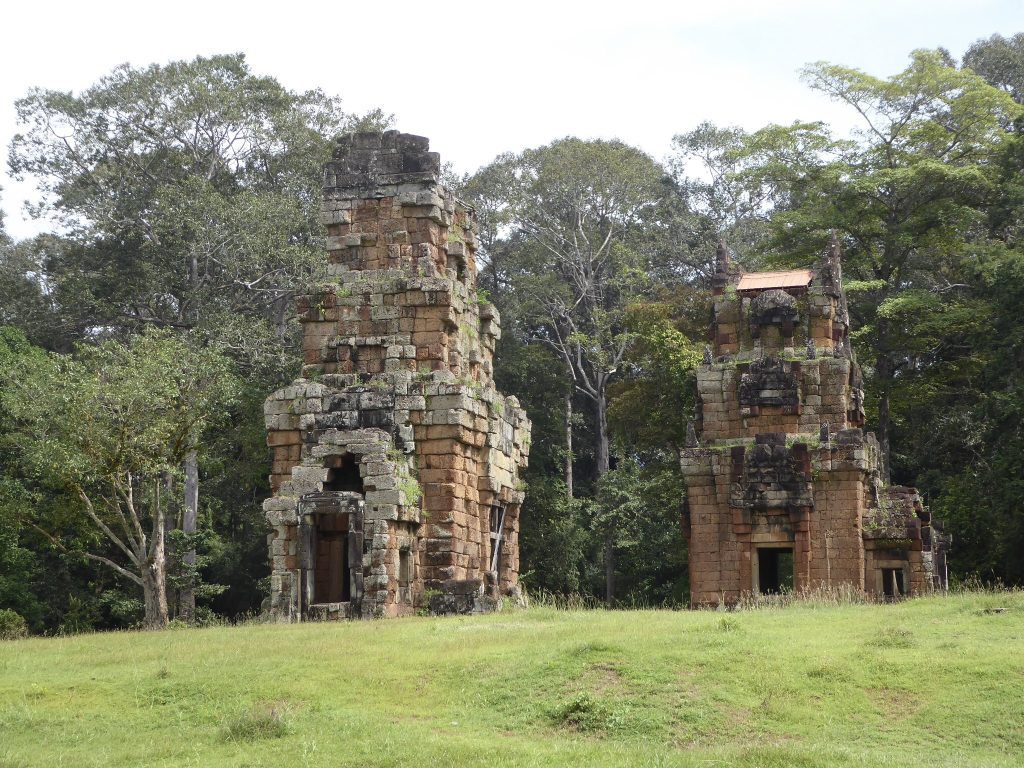
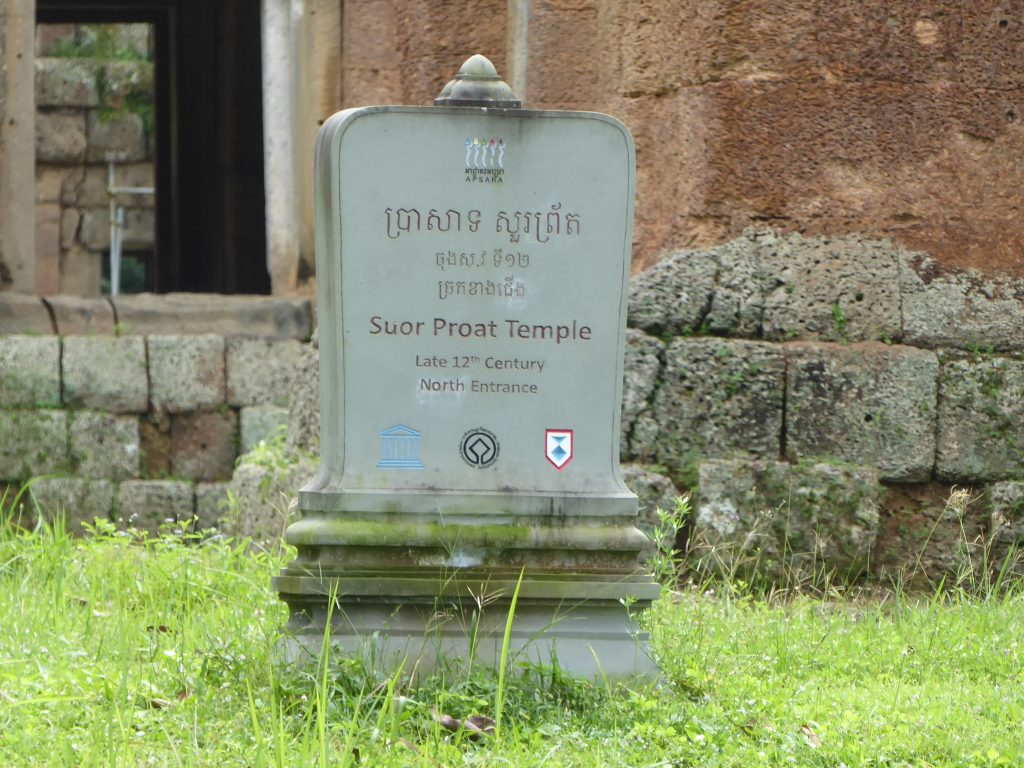
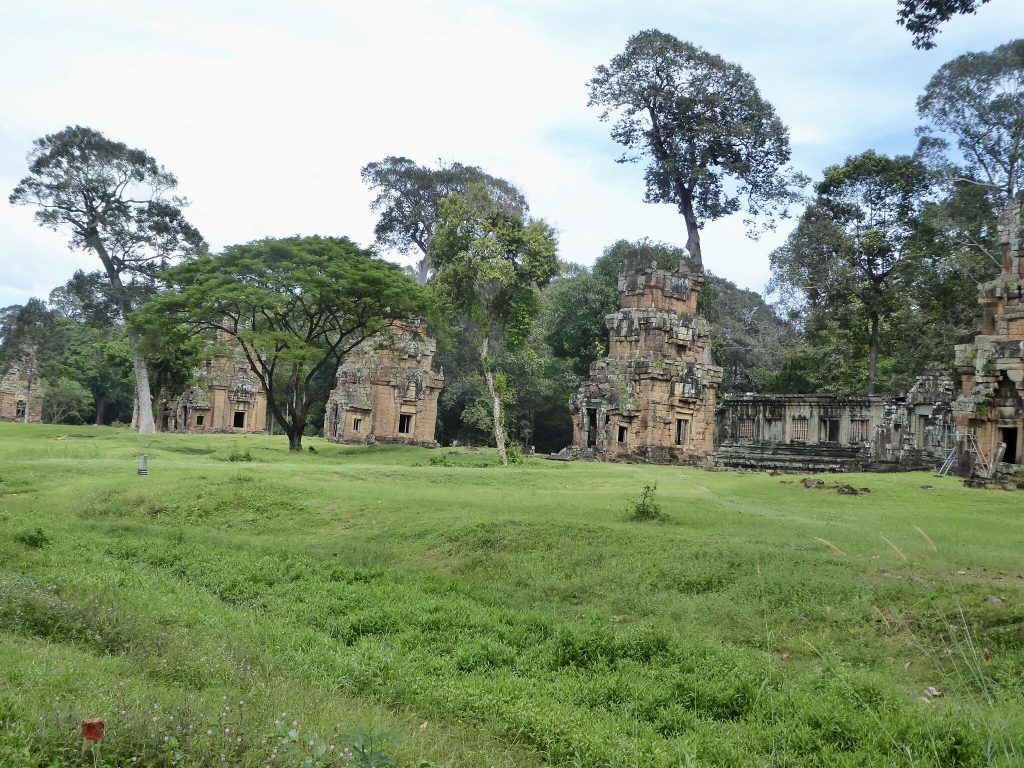
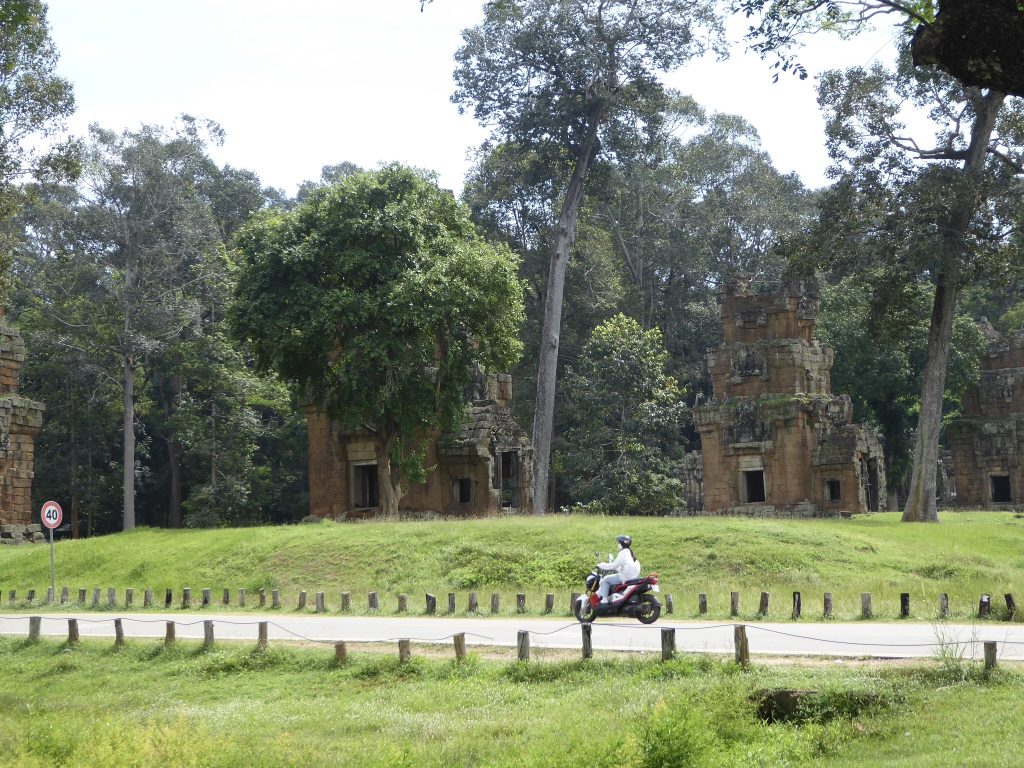
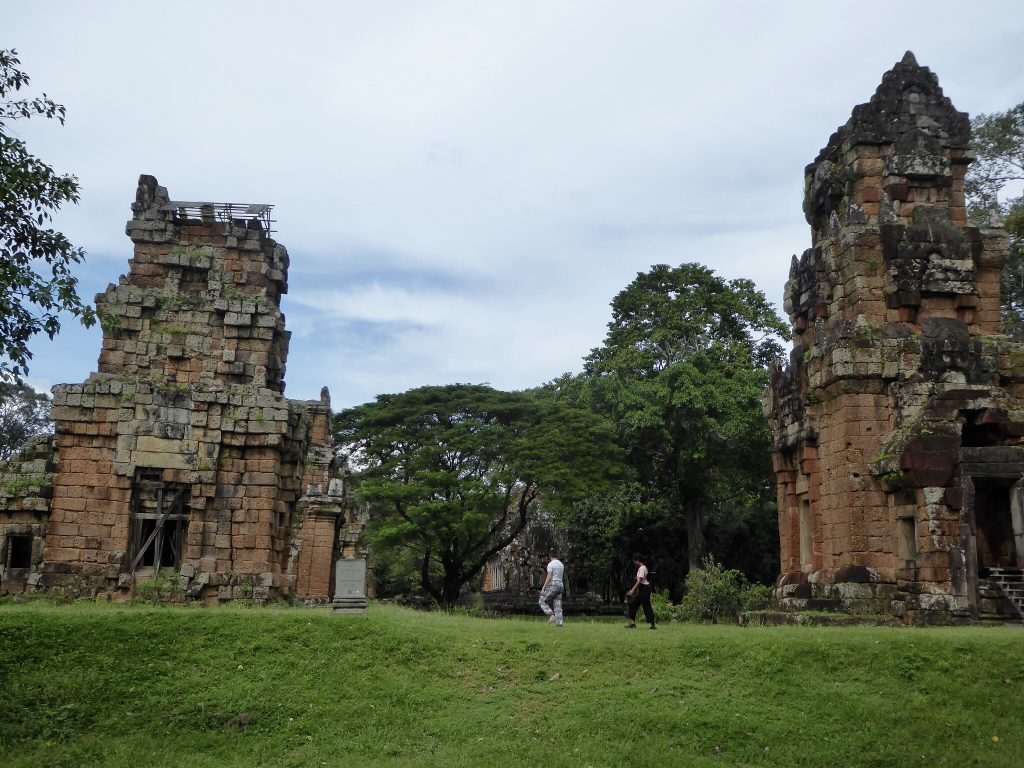
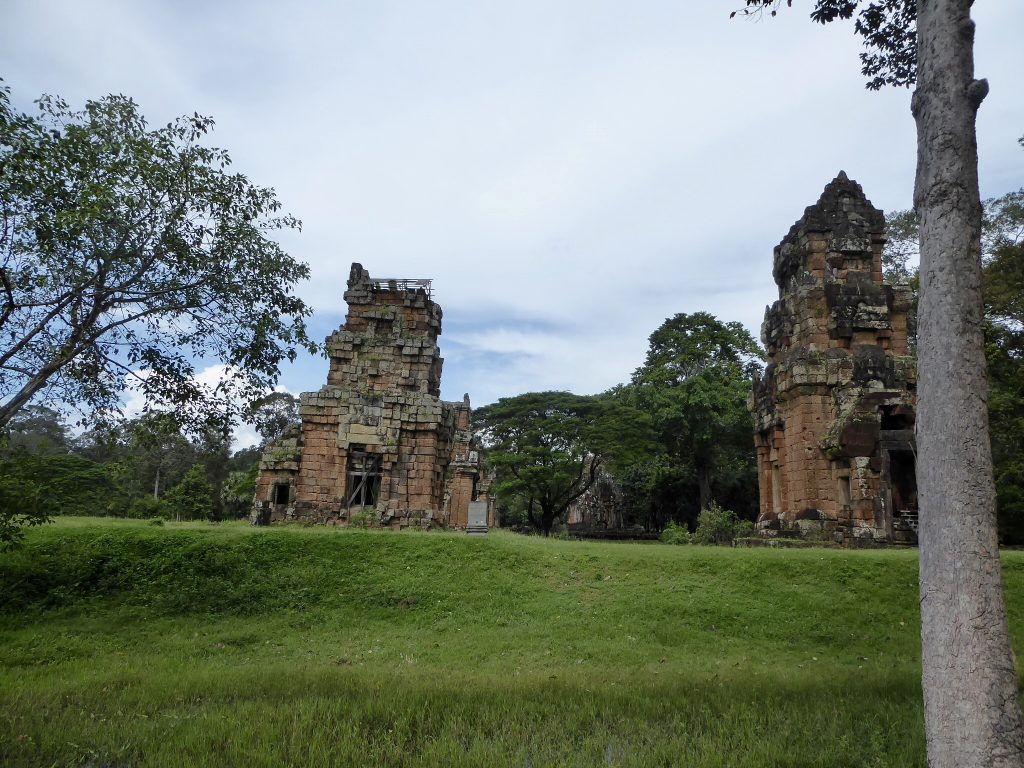

Come with me on a quick cycle past Bayon to Prasat Suor Prat (3.4 minutes). Volume up for authentic noise like birds, traffic, bicycle bell, huffing and puffing… For a 4D experience inhale deeply during watching. Can you smell the exhaust?
I couldn’t get enough of these beautiful carvings. They went all around the temple, some between 10-20 meters at least. I went back another day just to focus on them in detail.
Most of the carvings show battles, but also daily life, and animals. All of them tell a story. Zoom in for more details (yes, there is a crocodile eating a poor bloke that fell or was pushed off a boat into the river).
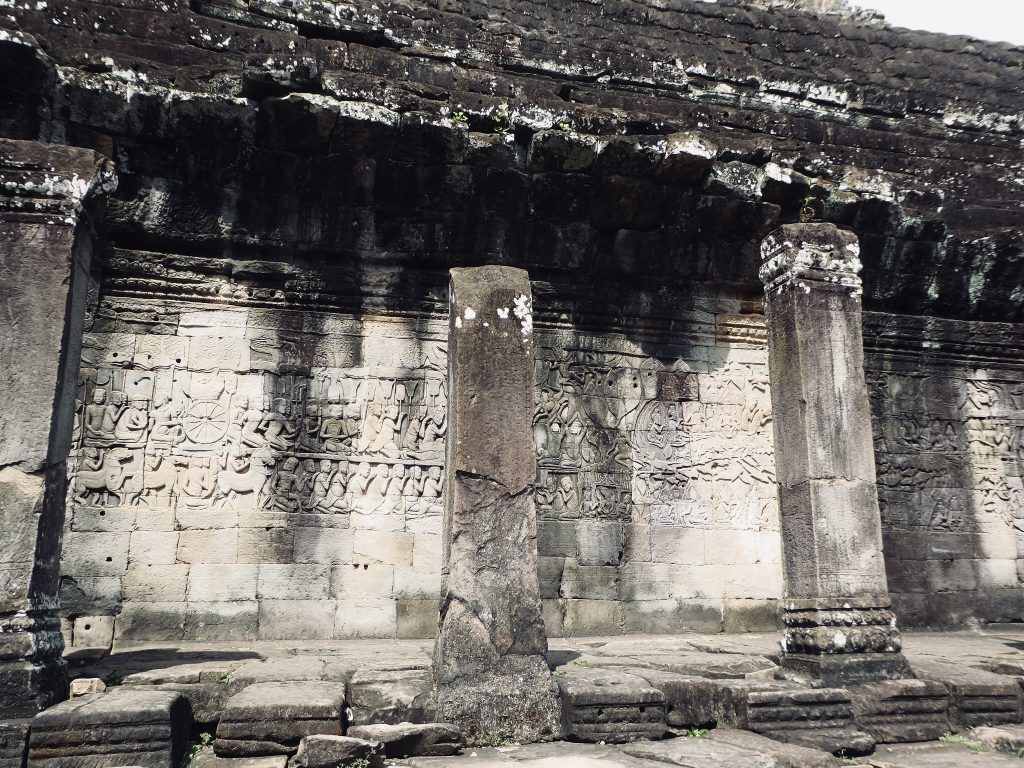
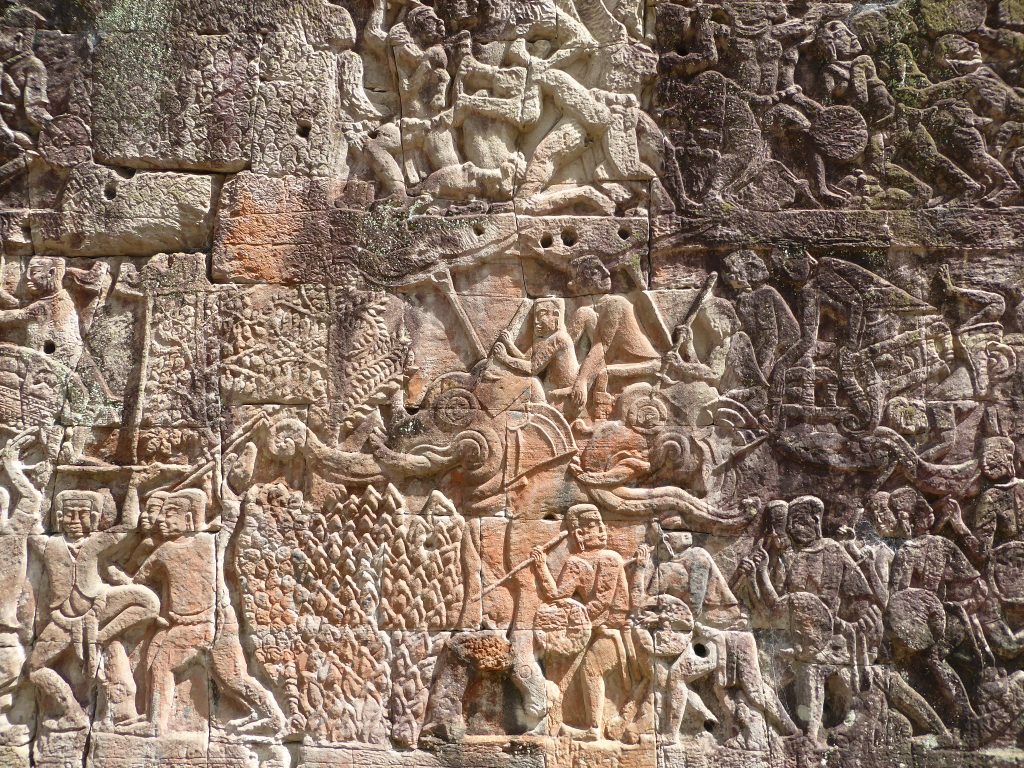
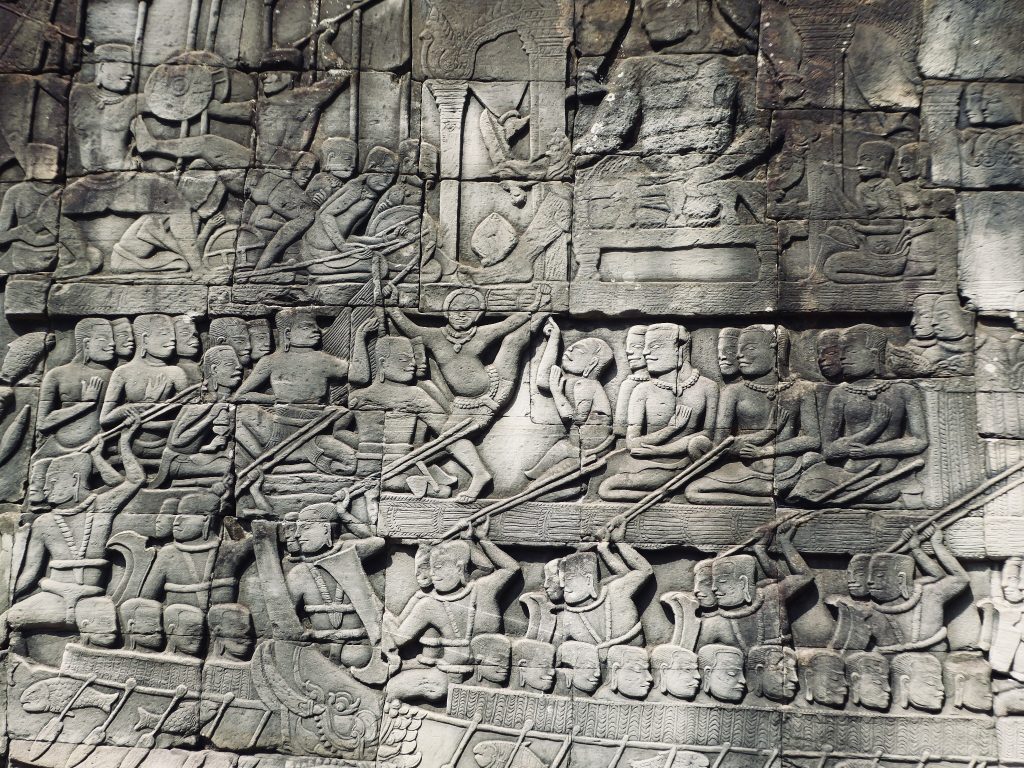
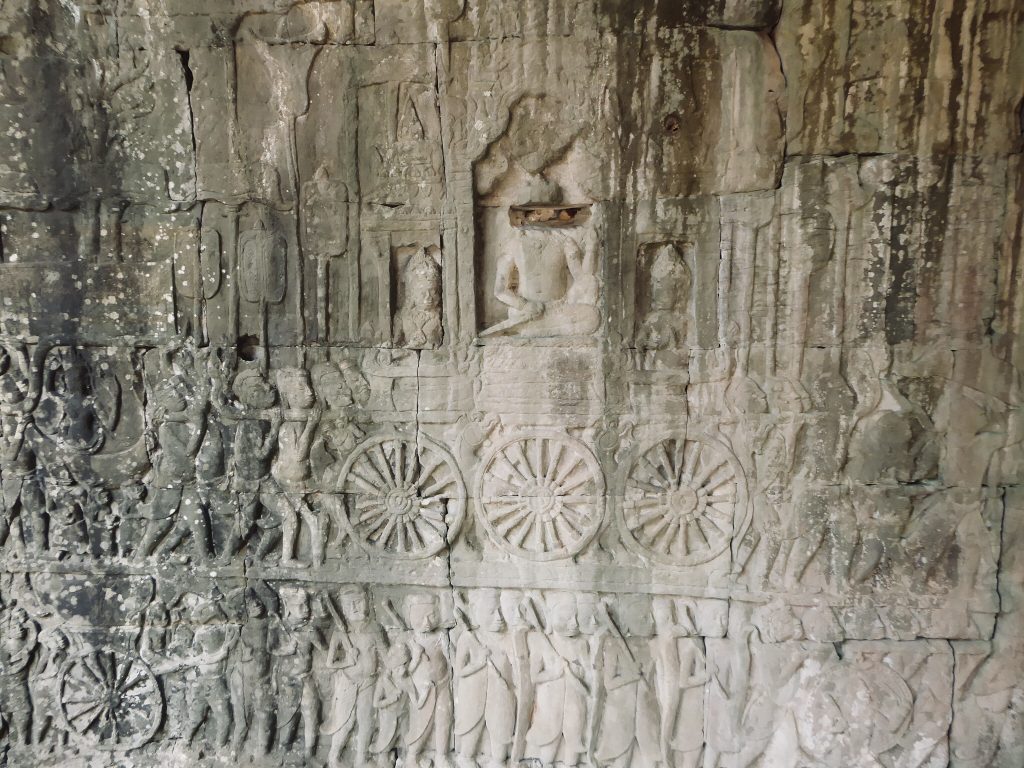
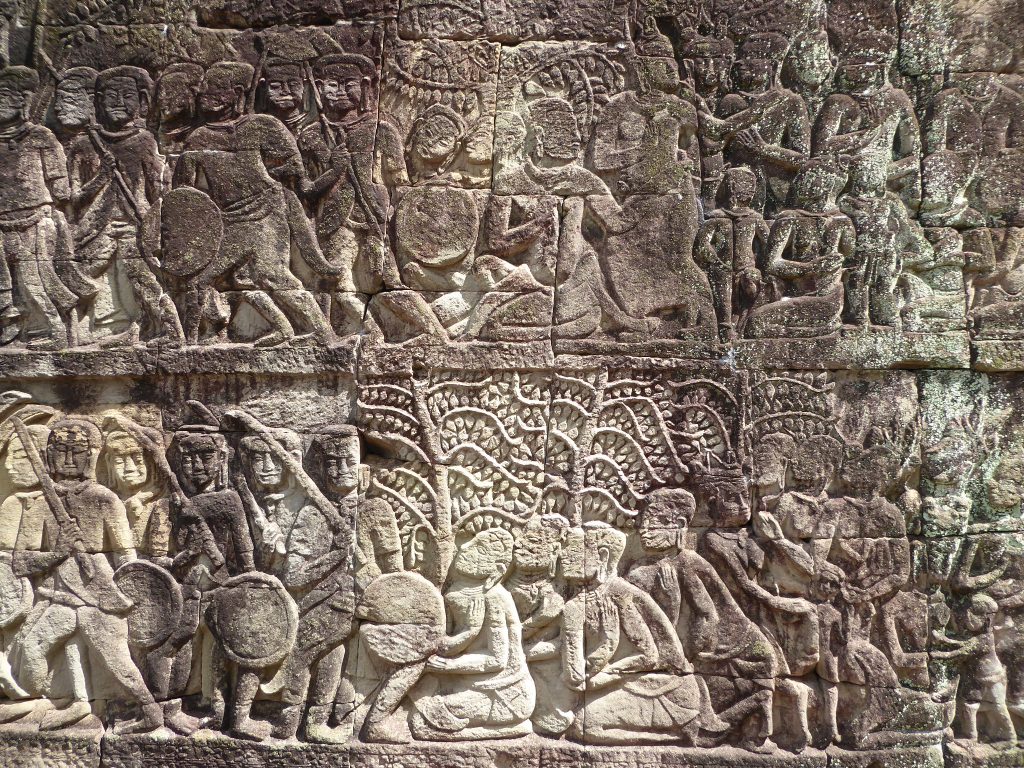
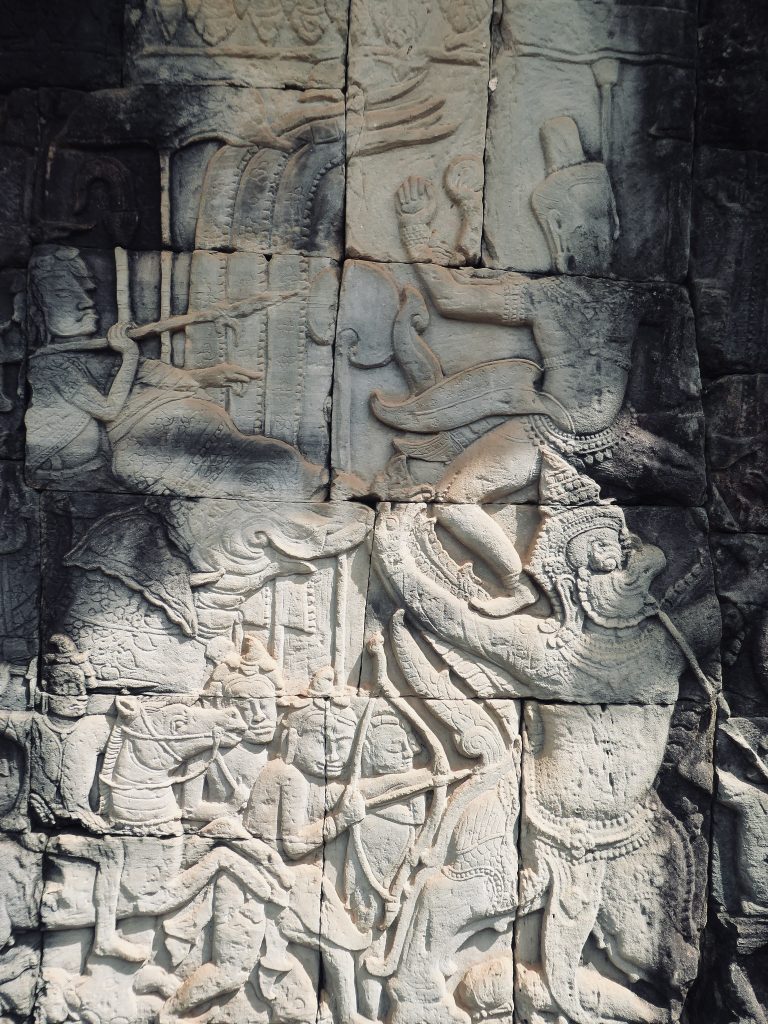
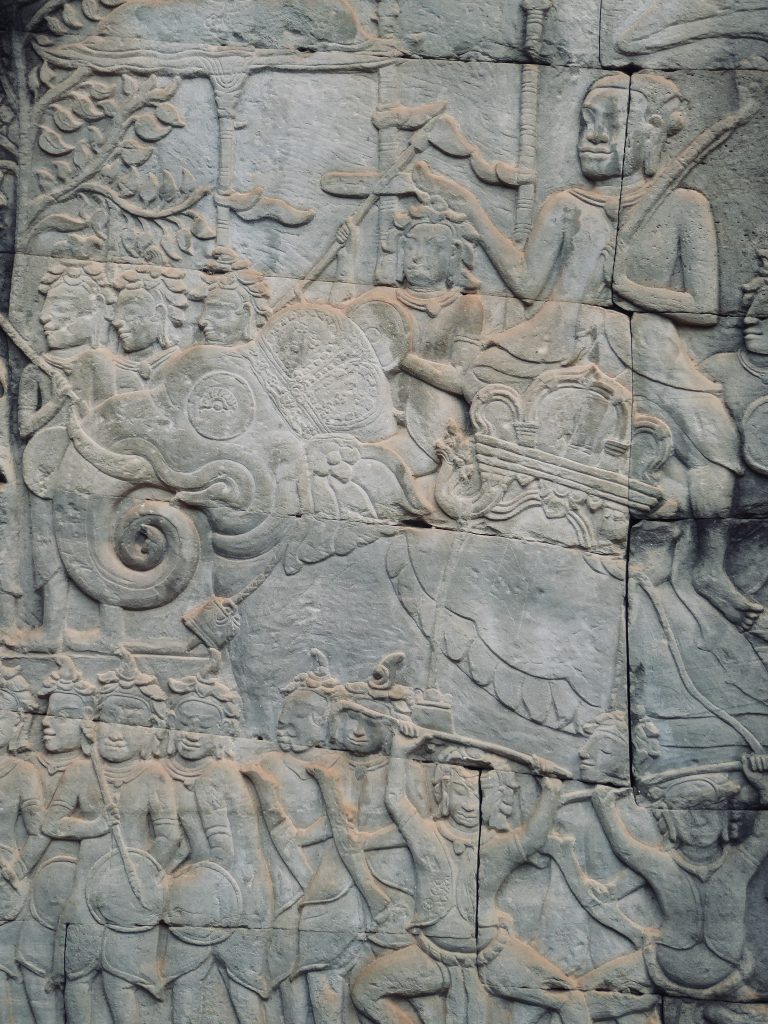
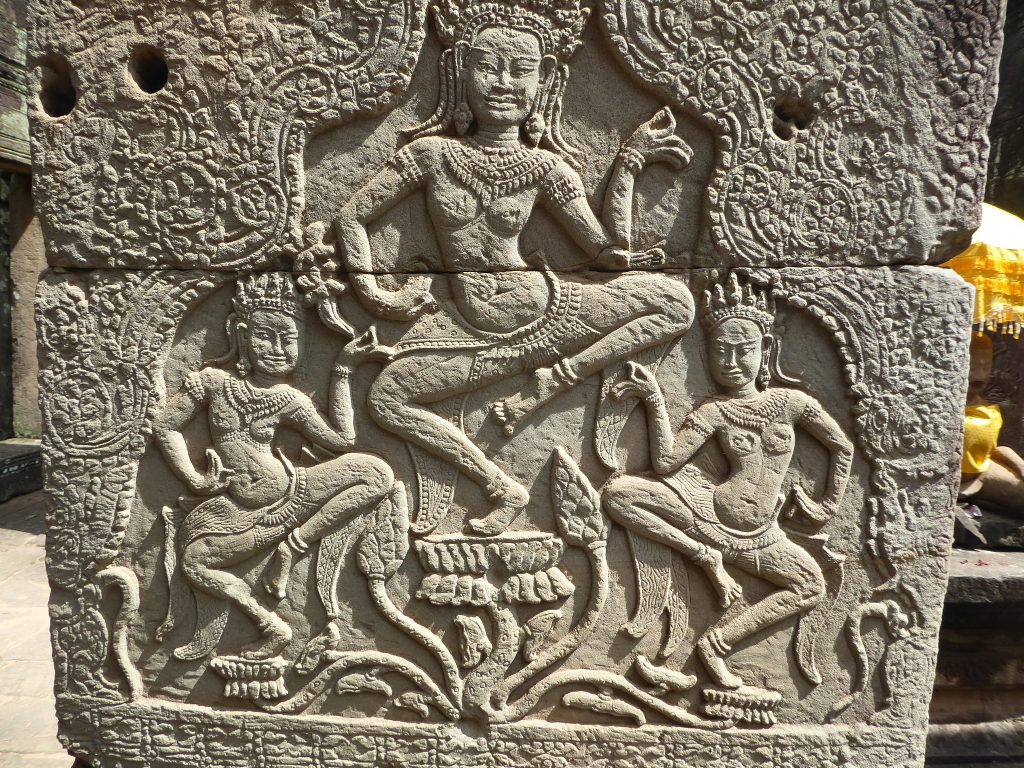
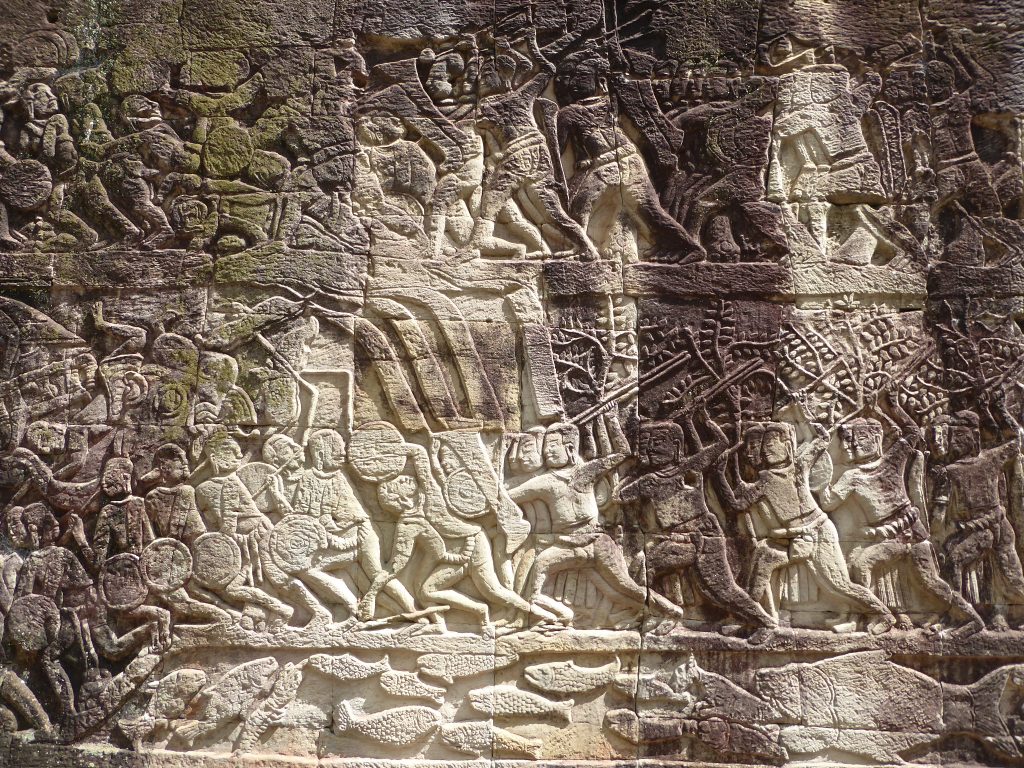
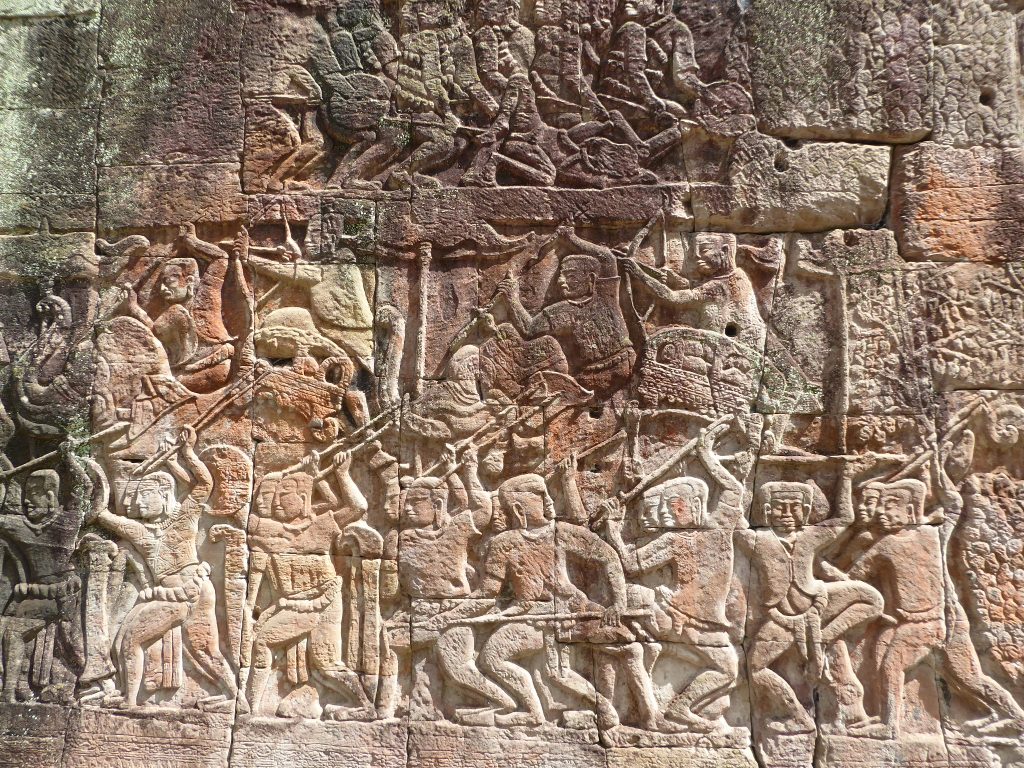

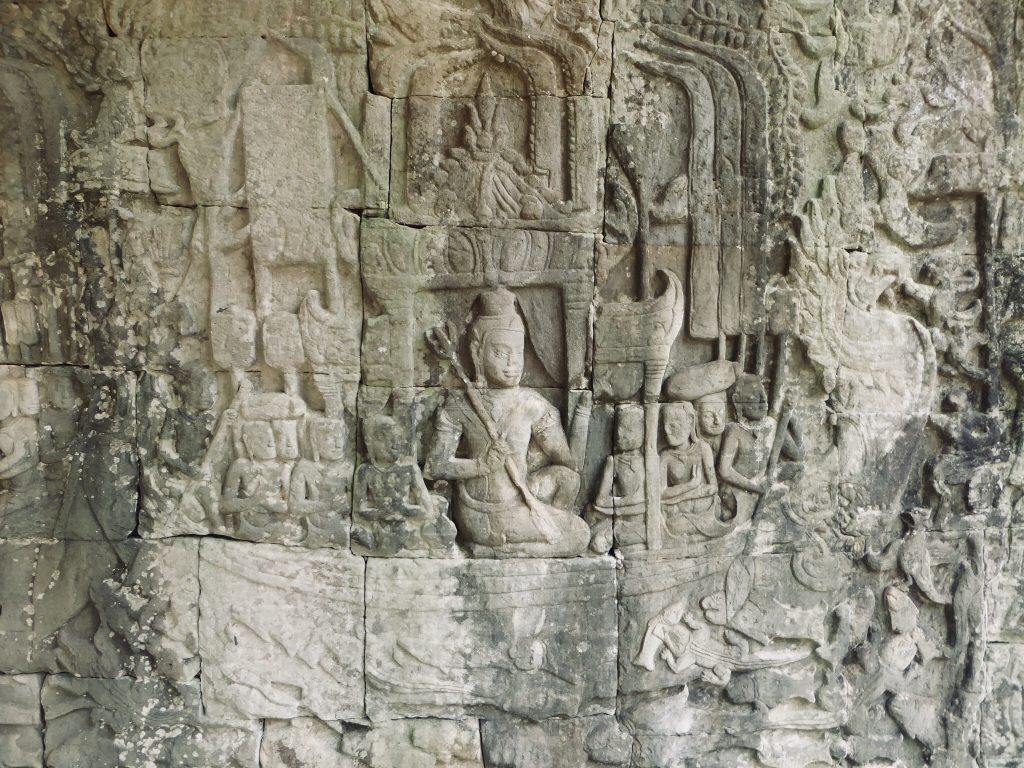
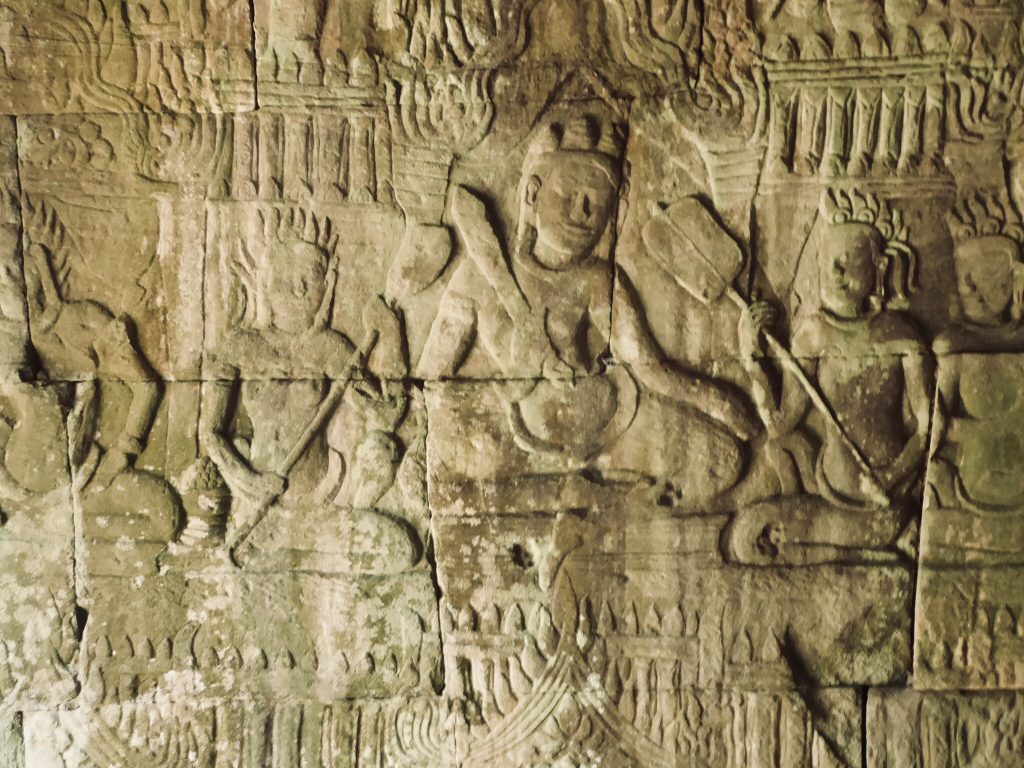
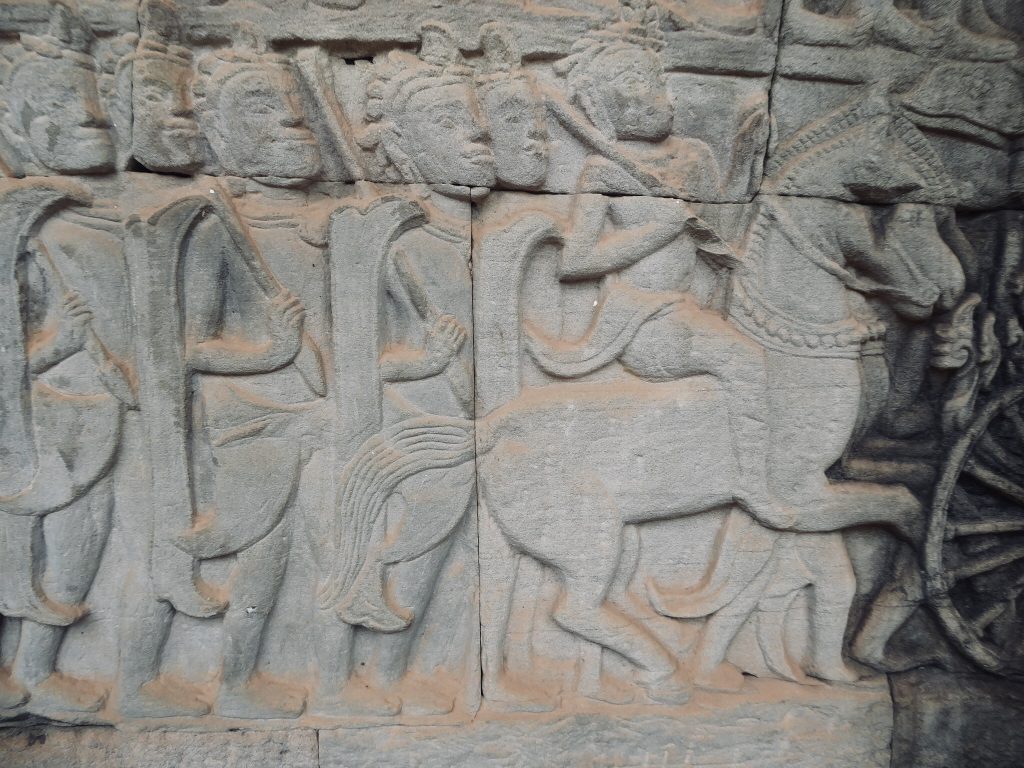
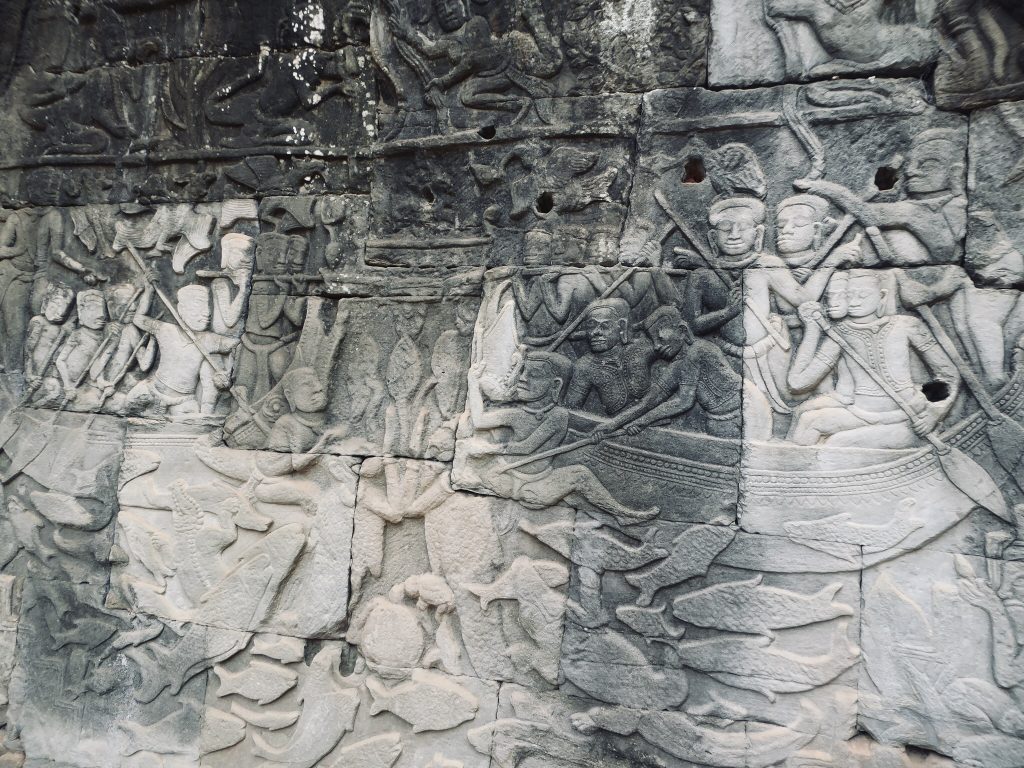
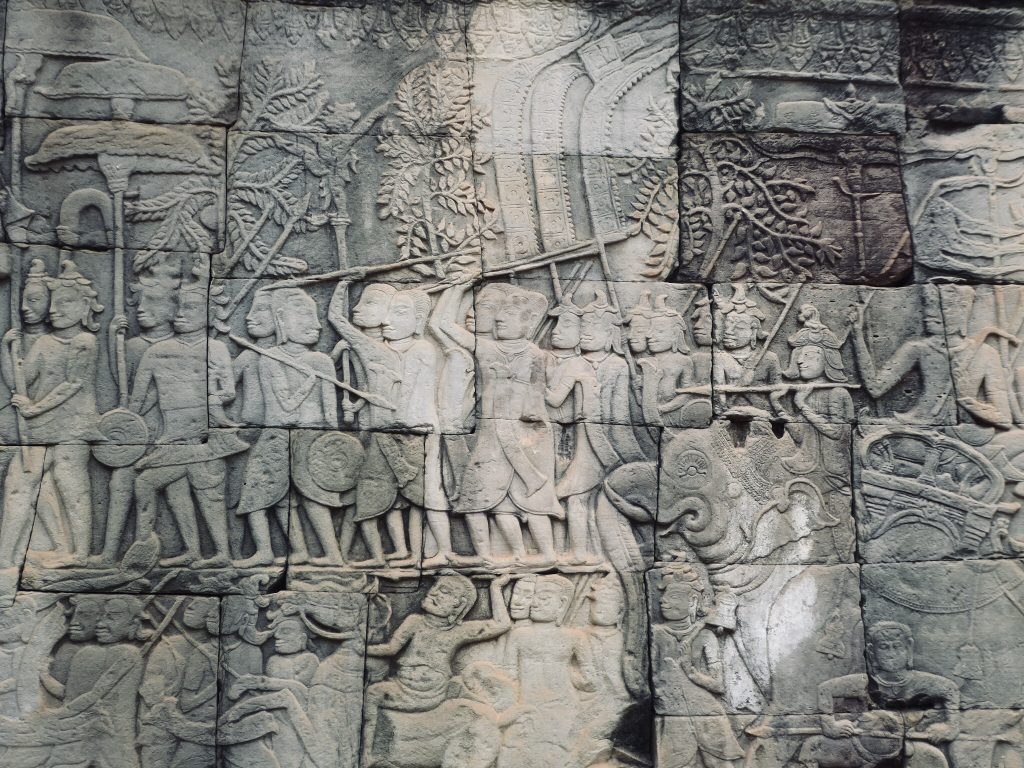
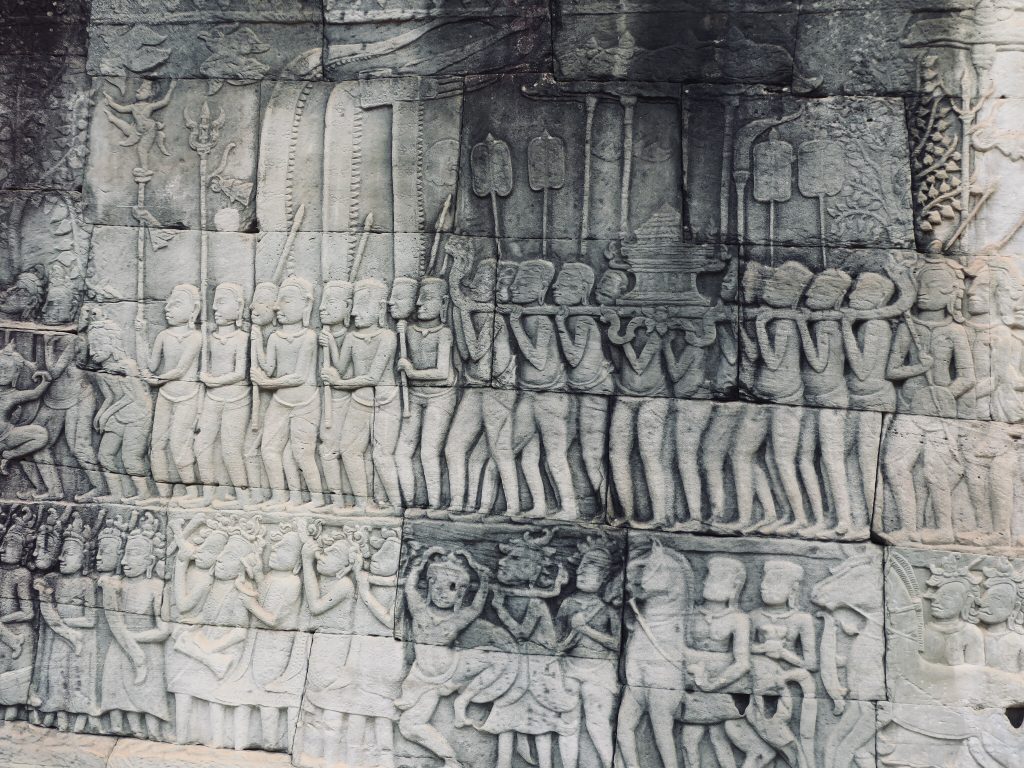
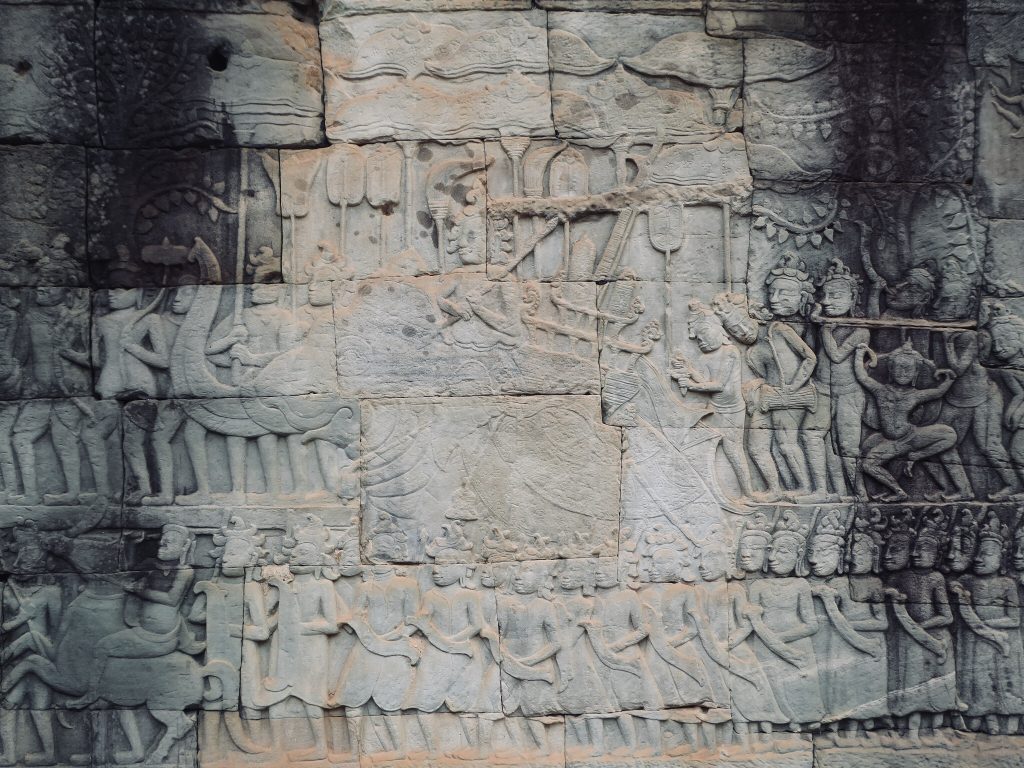
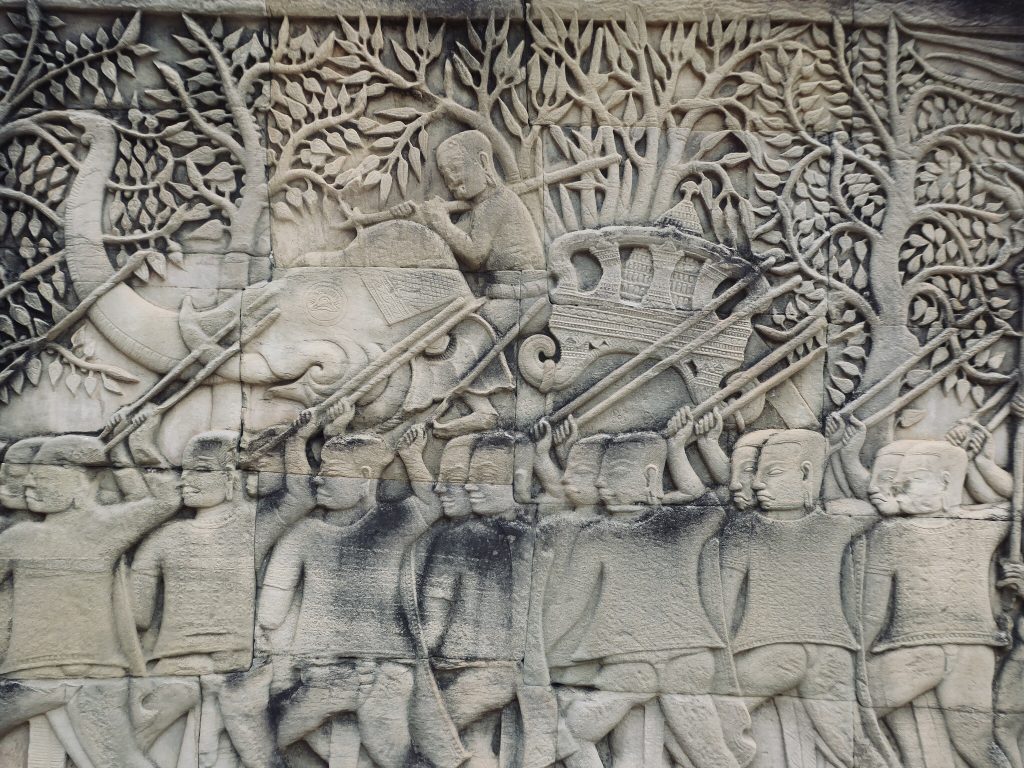
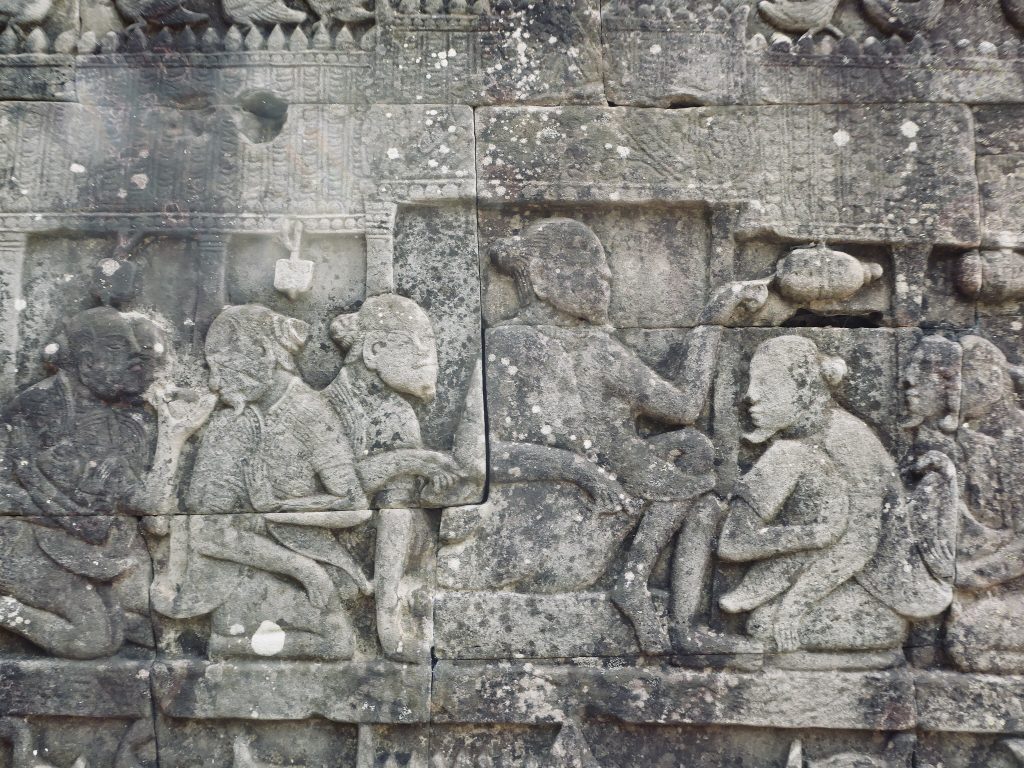
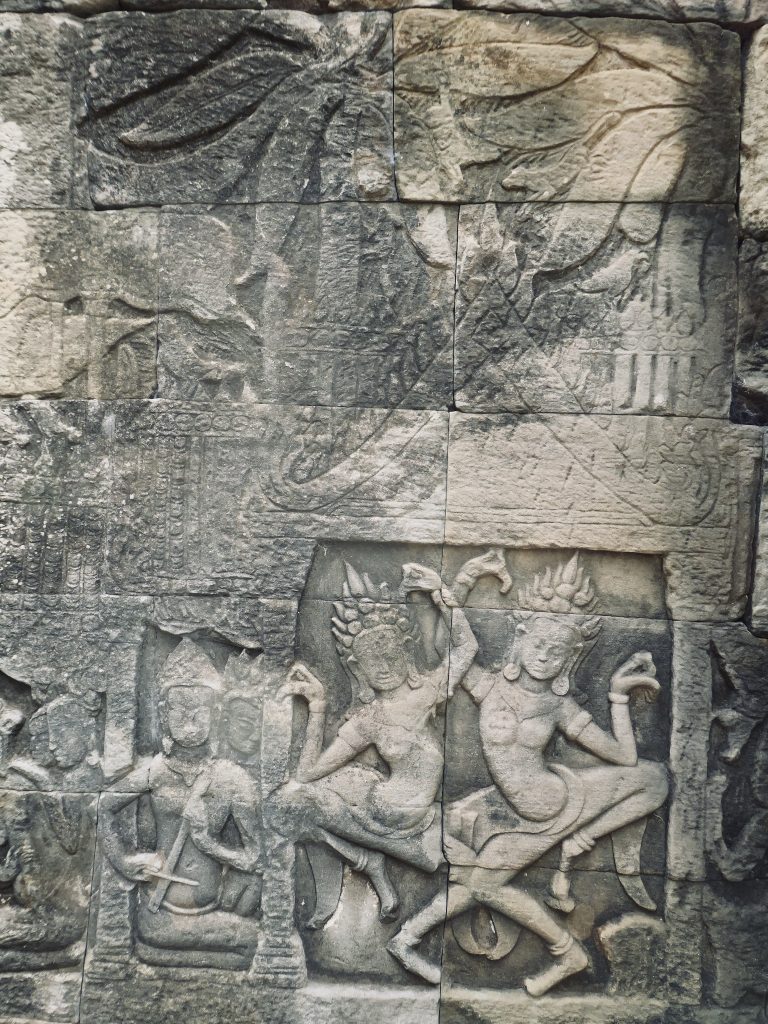
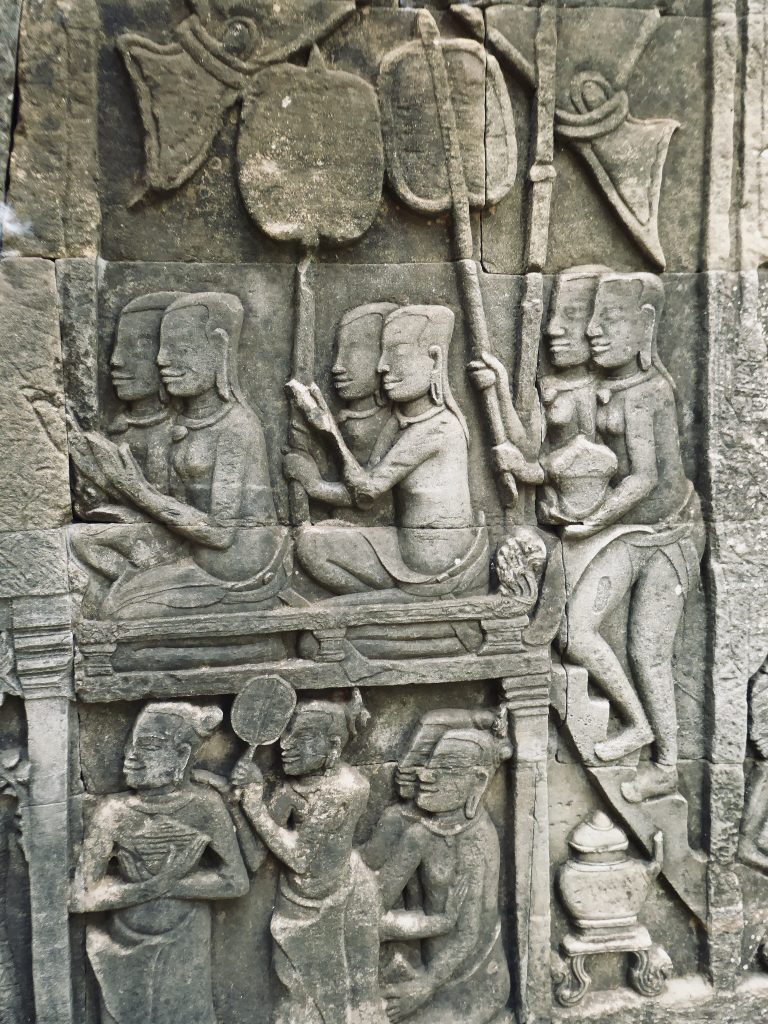
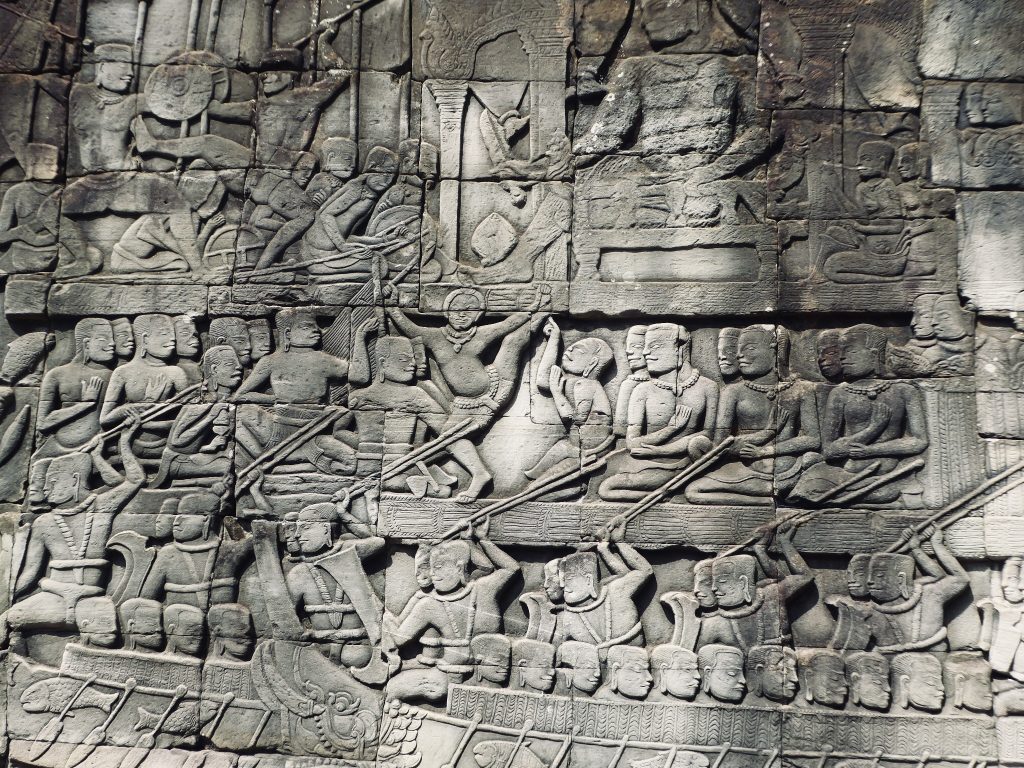
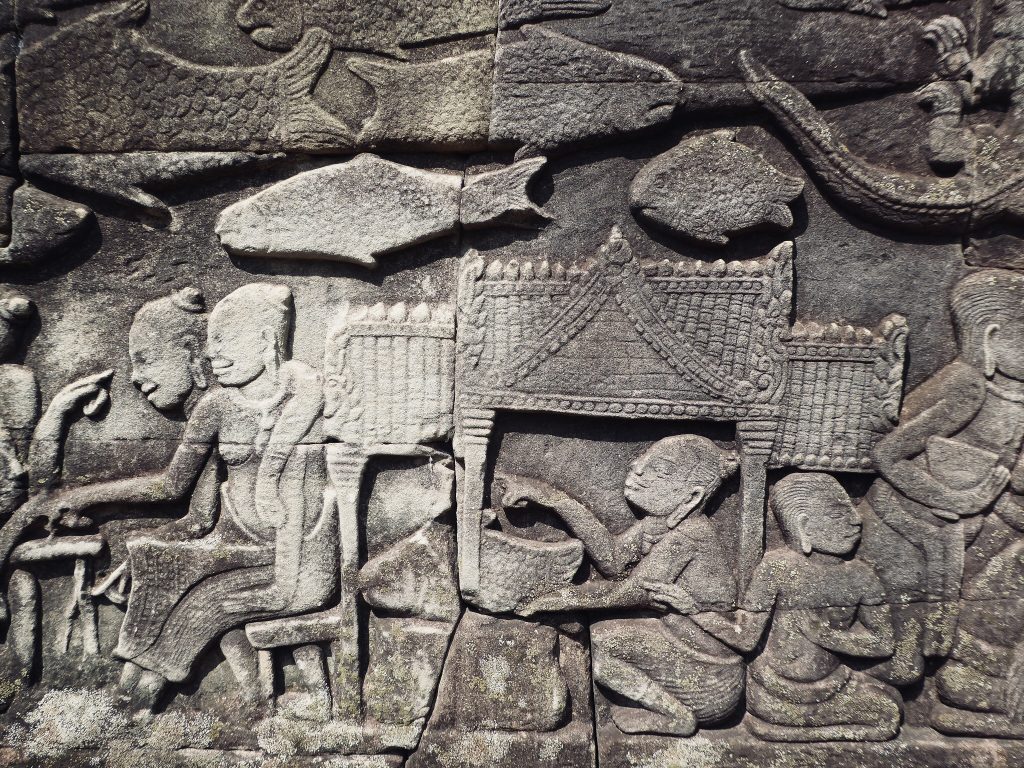
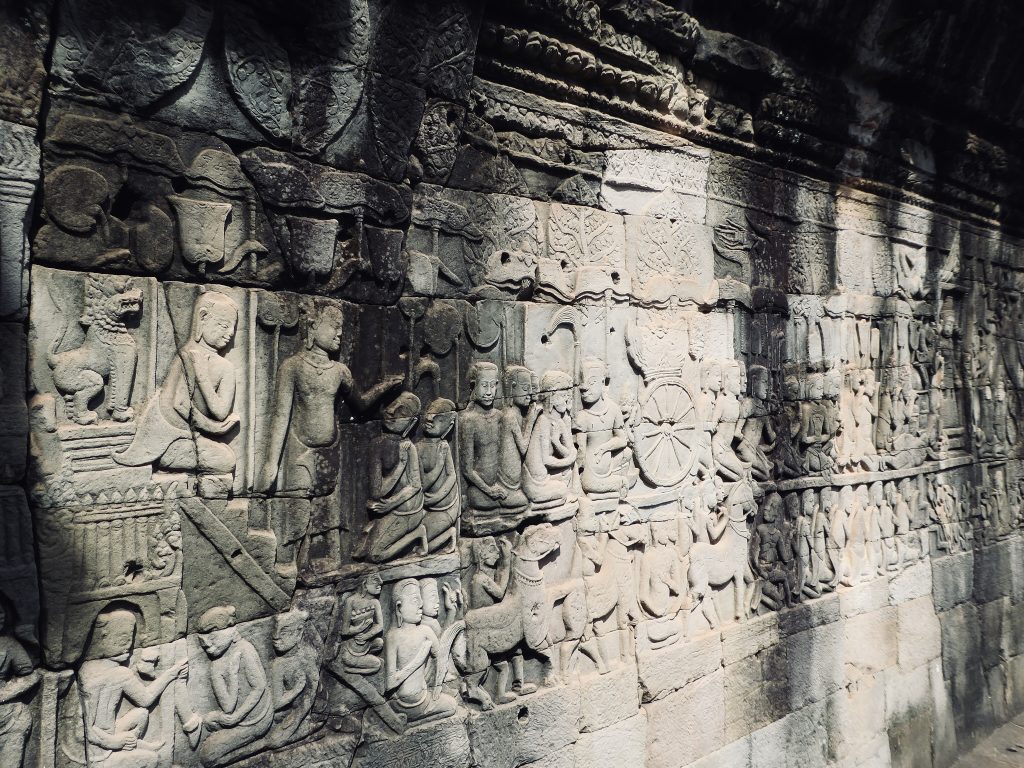
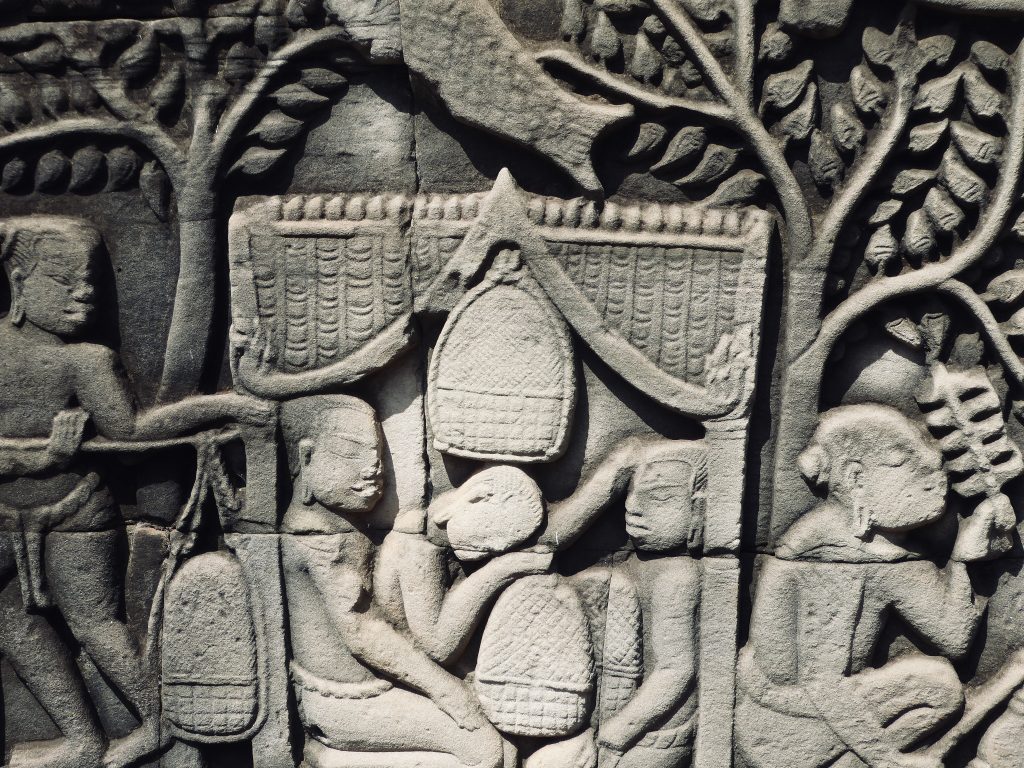
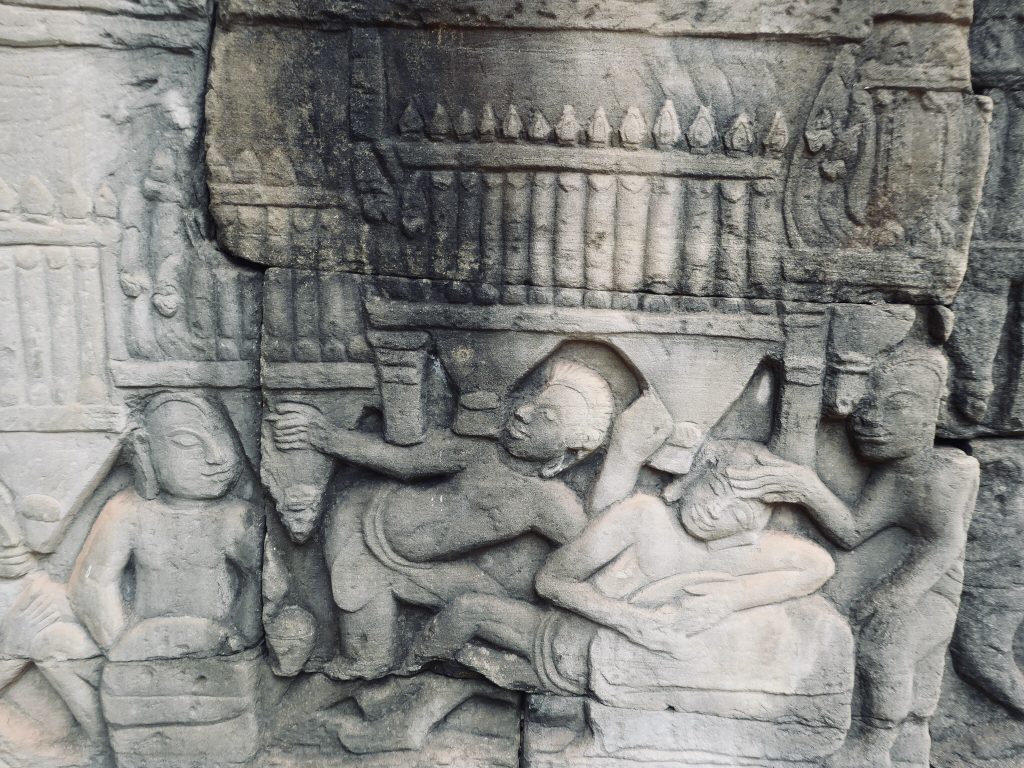
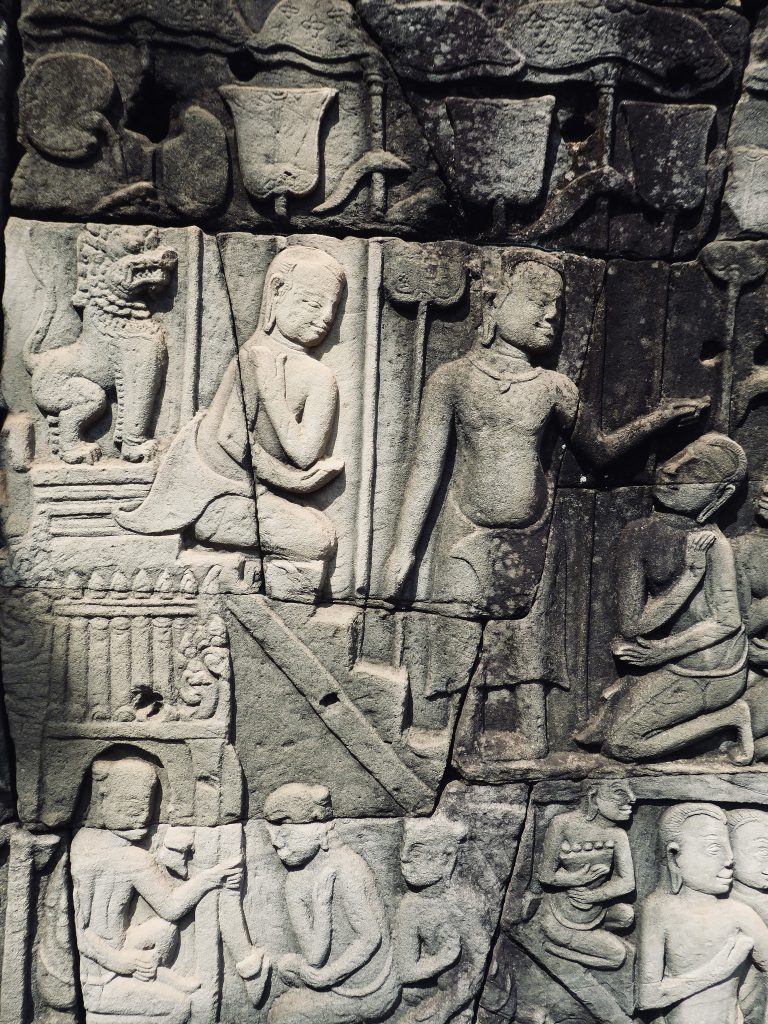
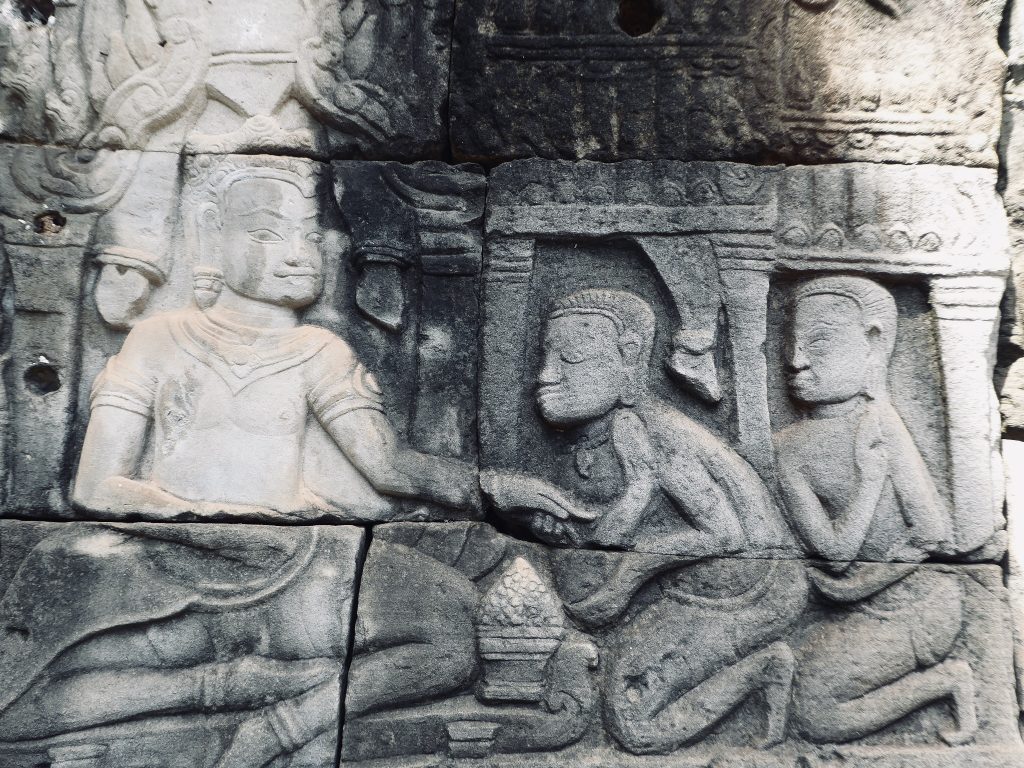
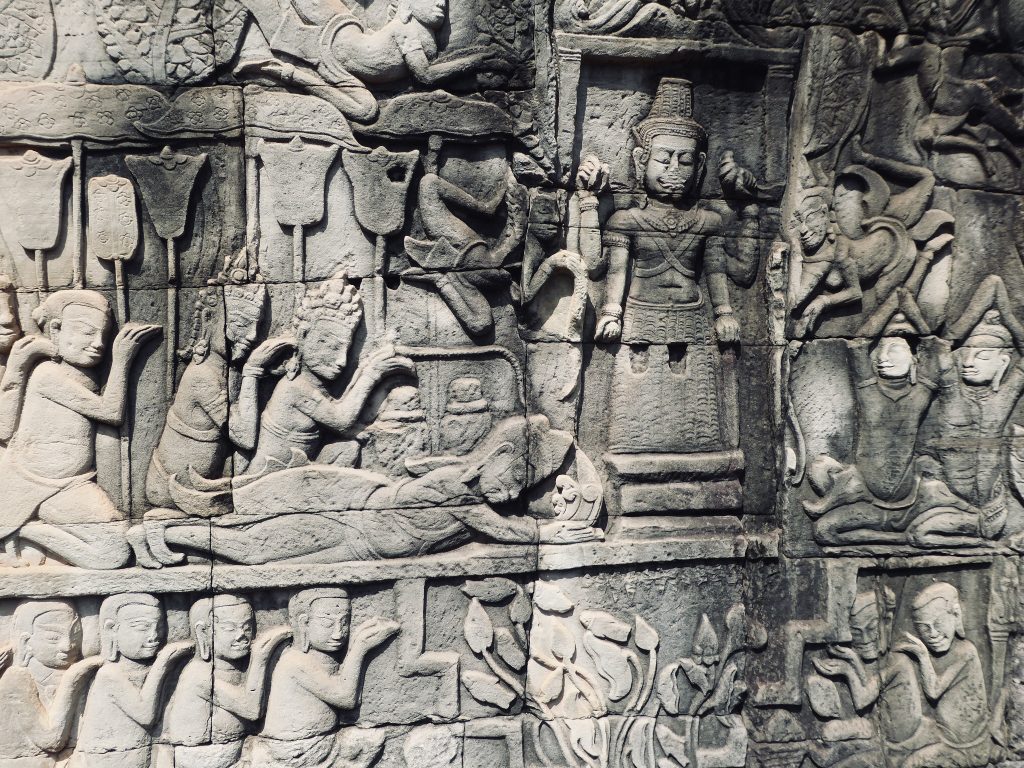
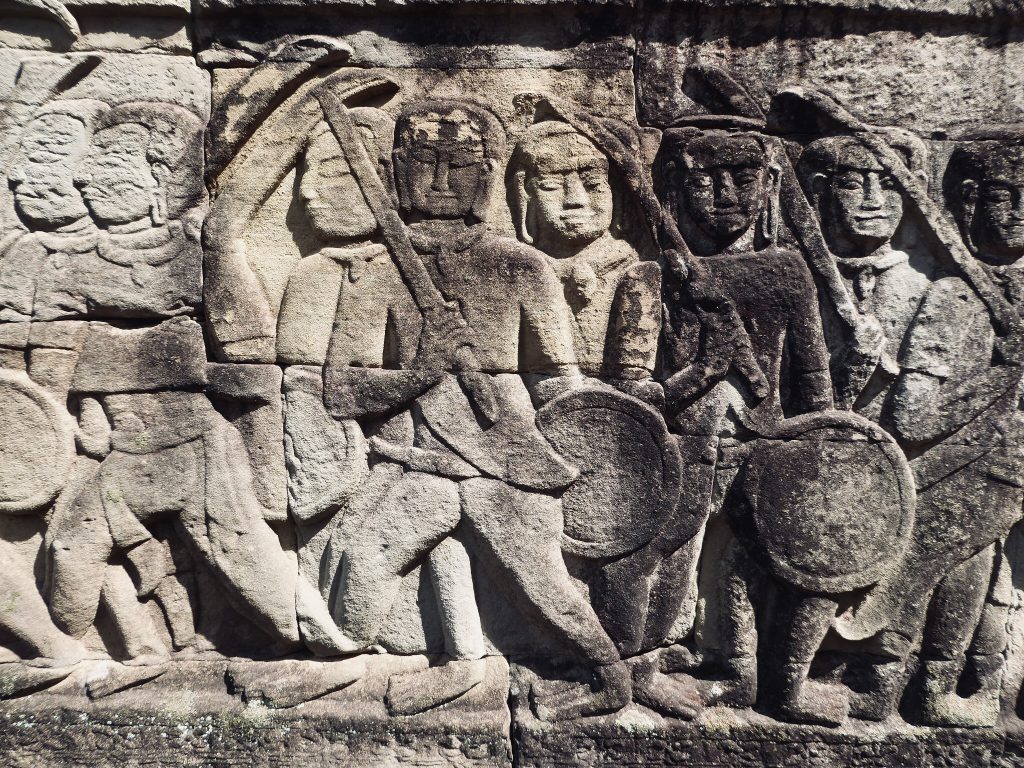
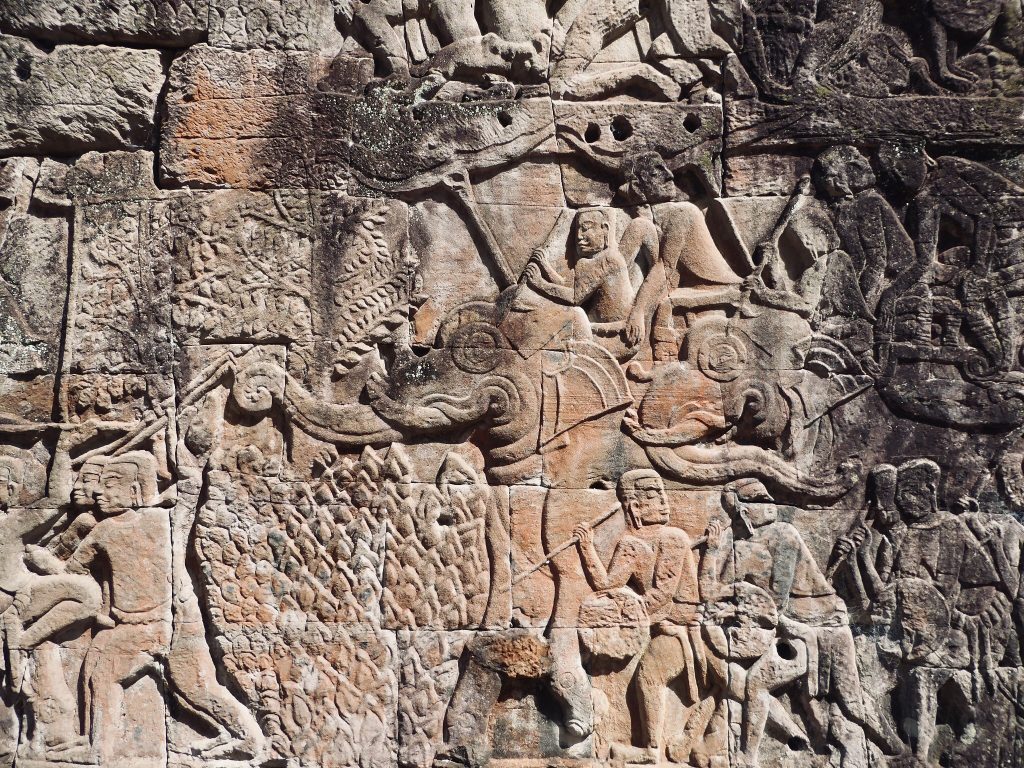
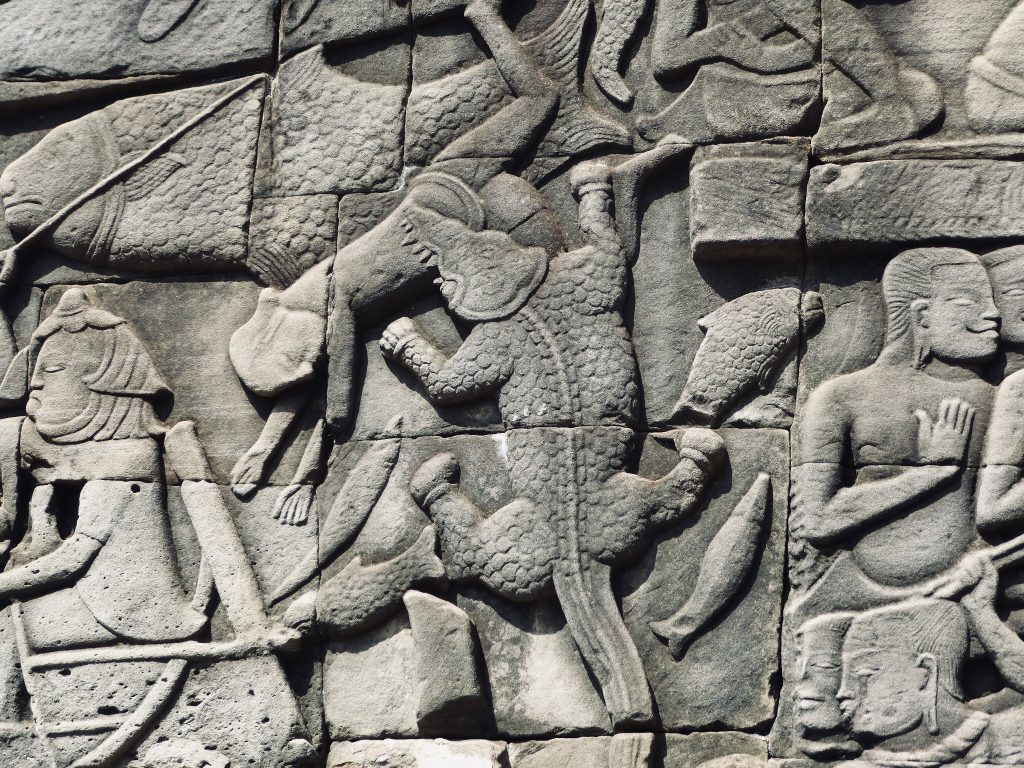
Bayon is the central temple within Angkor Thom (the walled city). It was erected under the reign of Jayavarman VII, towards the end of the 12th century.
The smiling face depicted on many of its towers is often called “enigmatic”. They sure make an impression. Only 37 towers are still standing among the 49 or 54.
Its exceptional bas-reliefs depict the daily life of the Khmers at the time of Angkor’s grandeur and mythological scenes. I will post those separately.
If you want yo know more about the history and symbolism of this temple please see: https://apsaraauthority.gov.kh/2021/08/05/bayon/


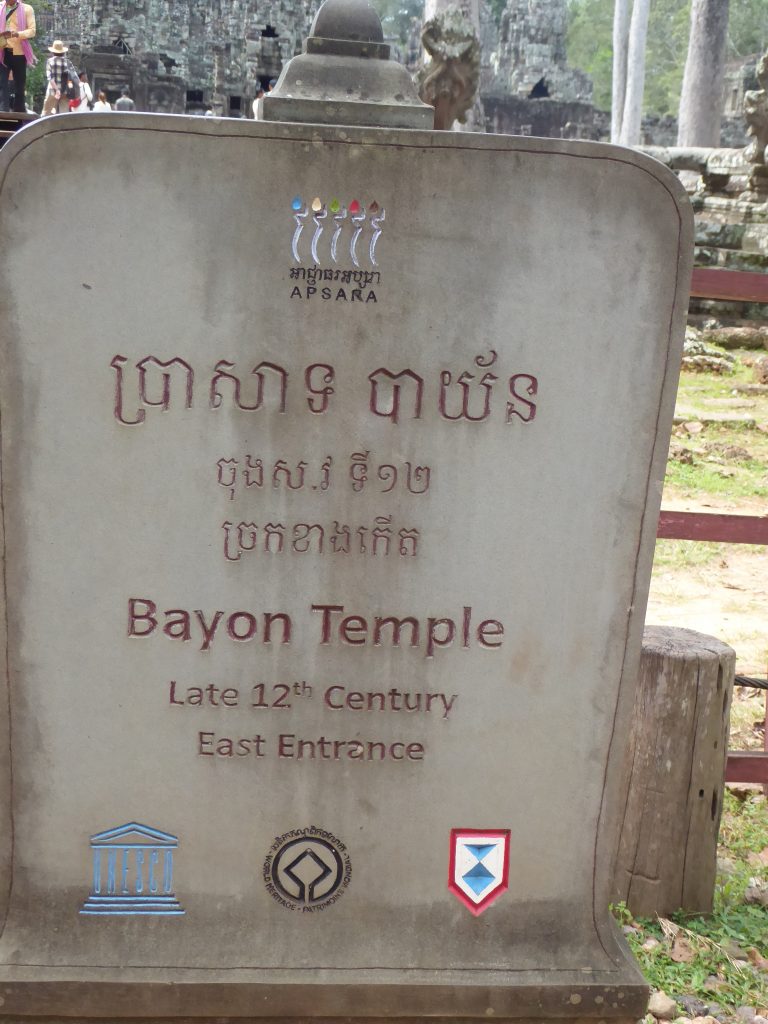
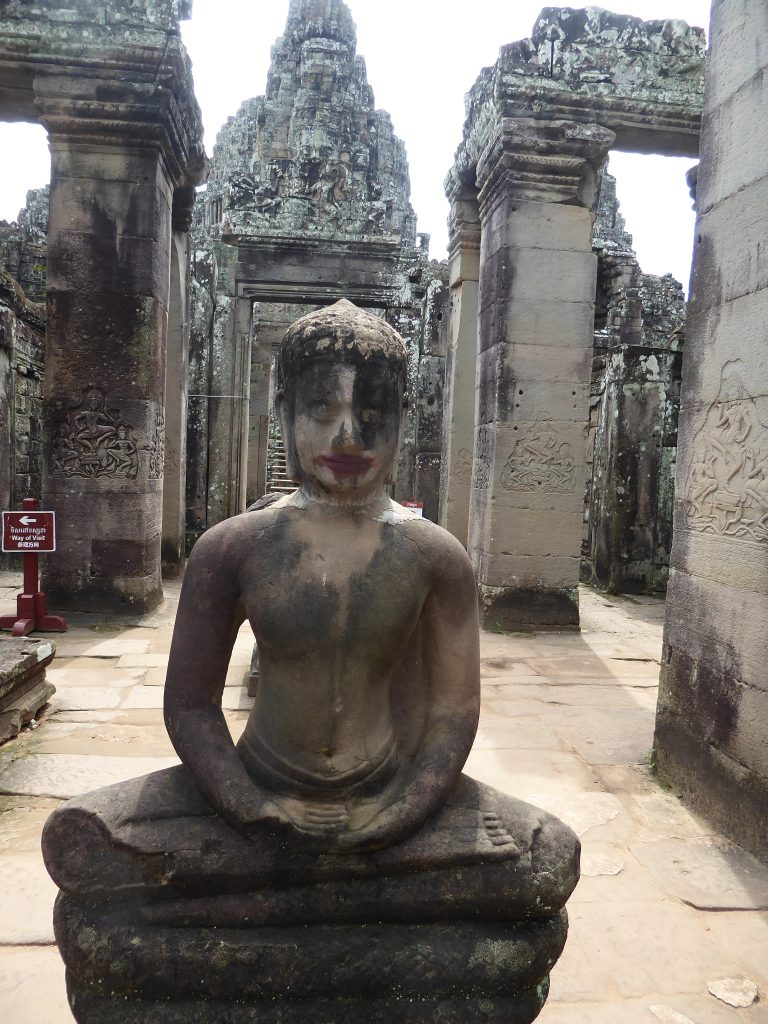
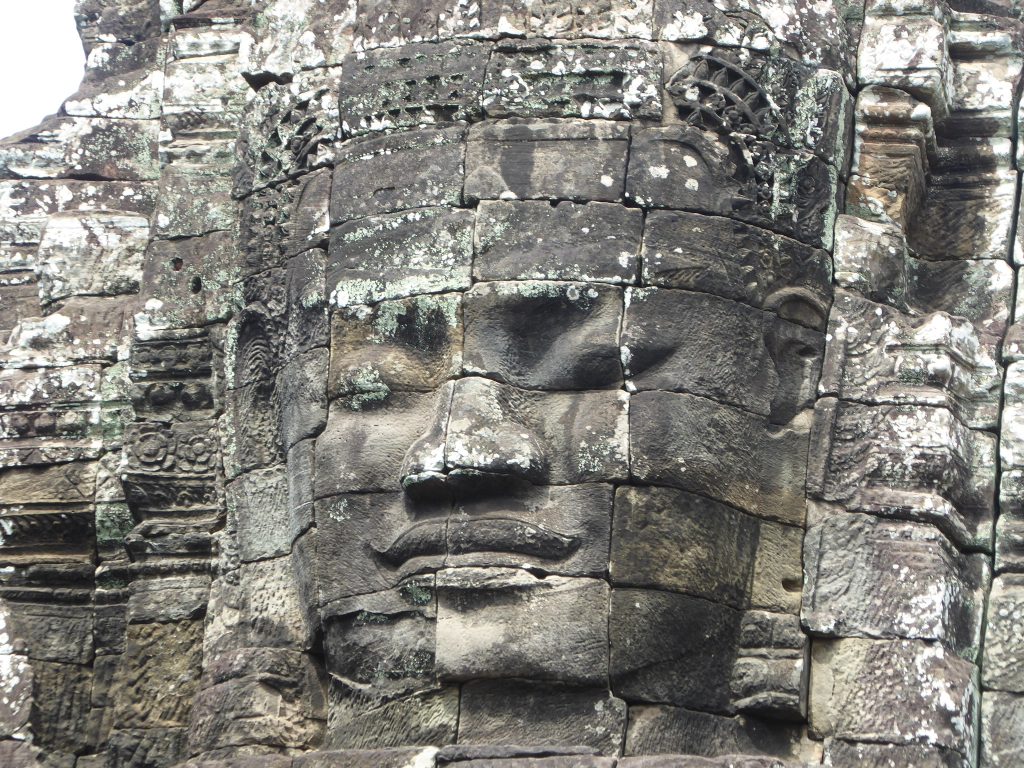
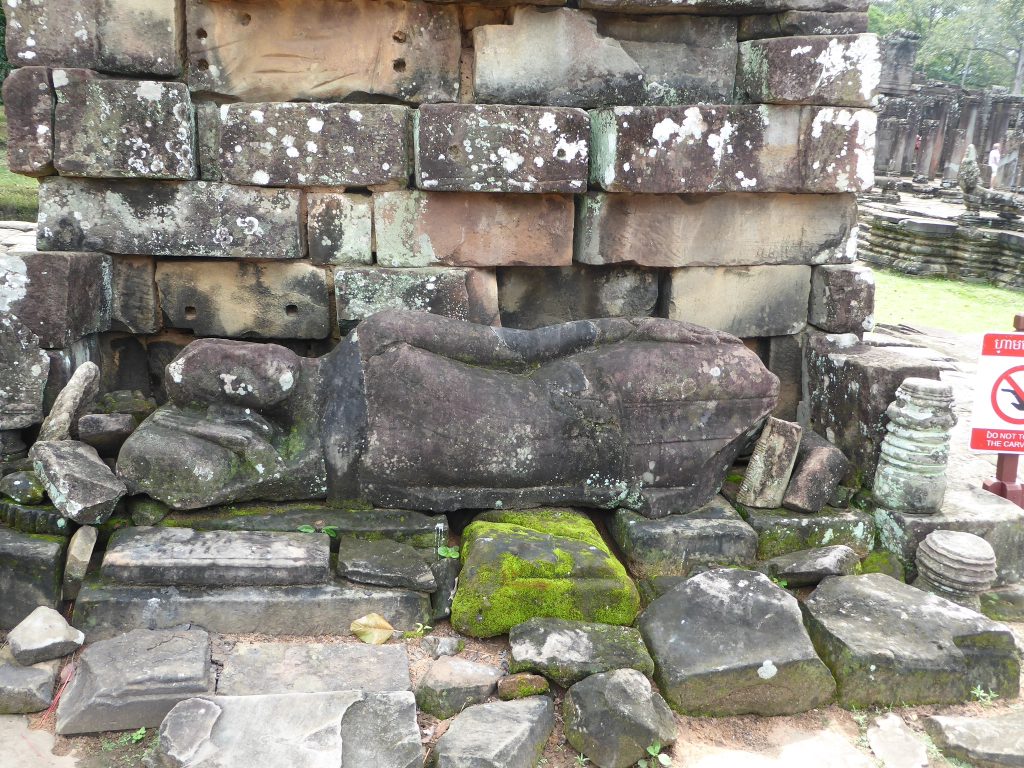
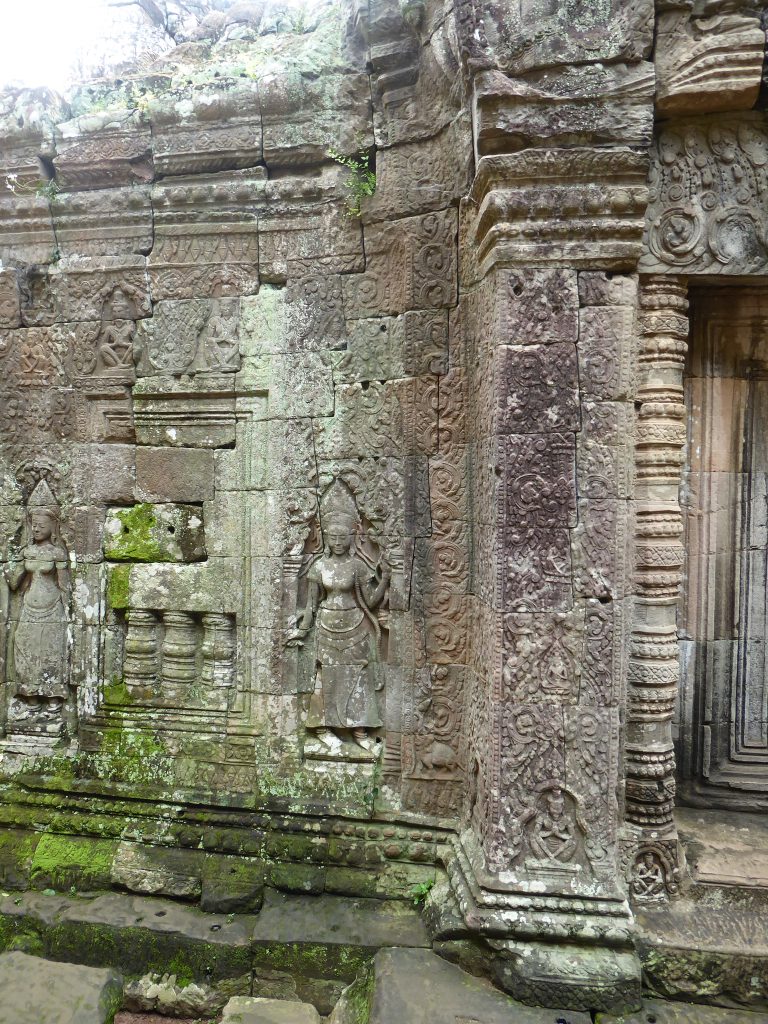
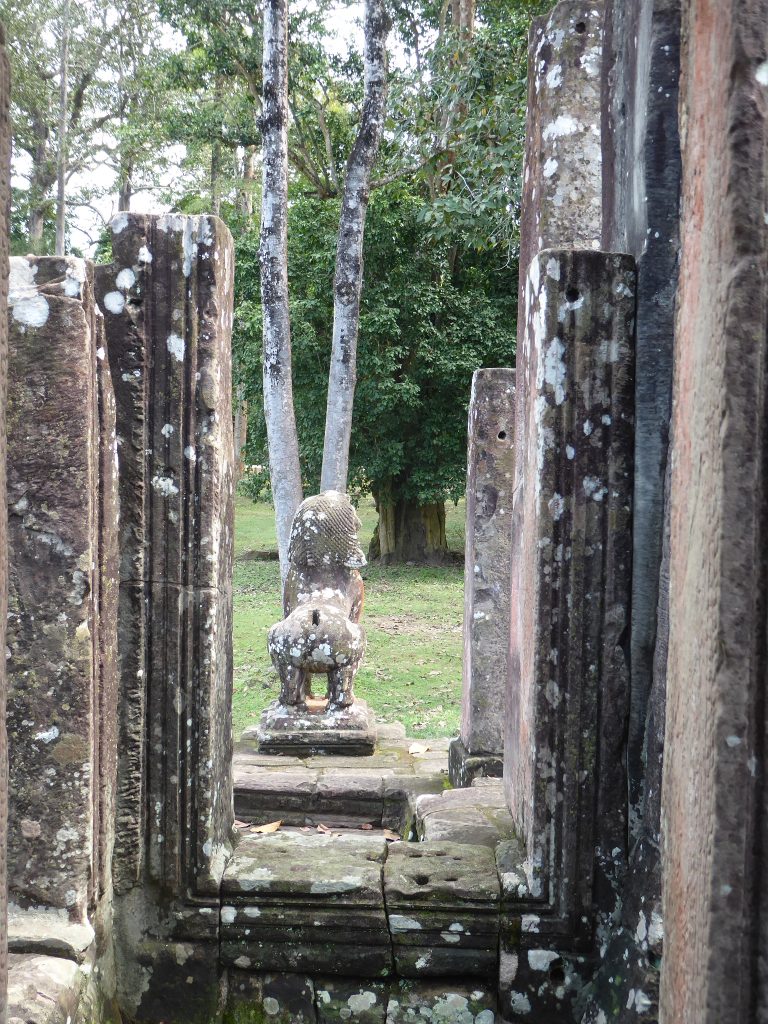
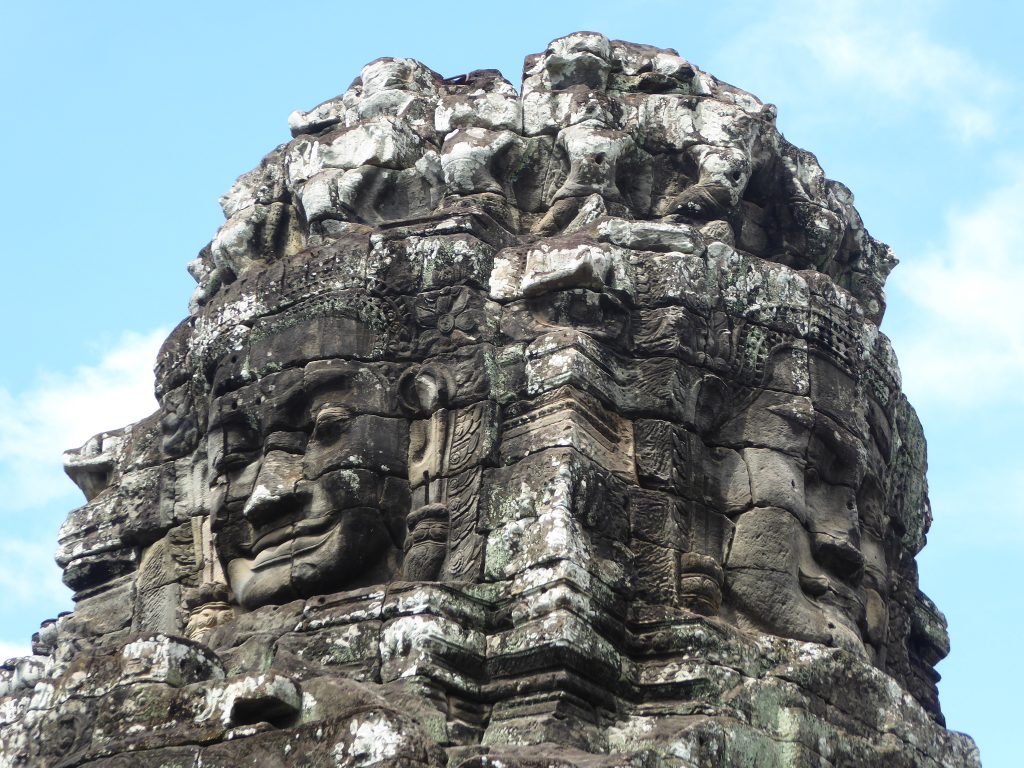


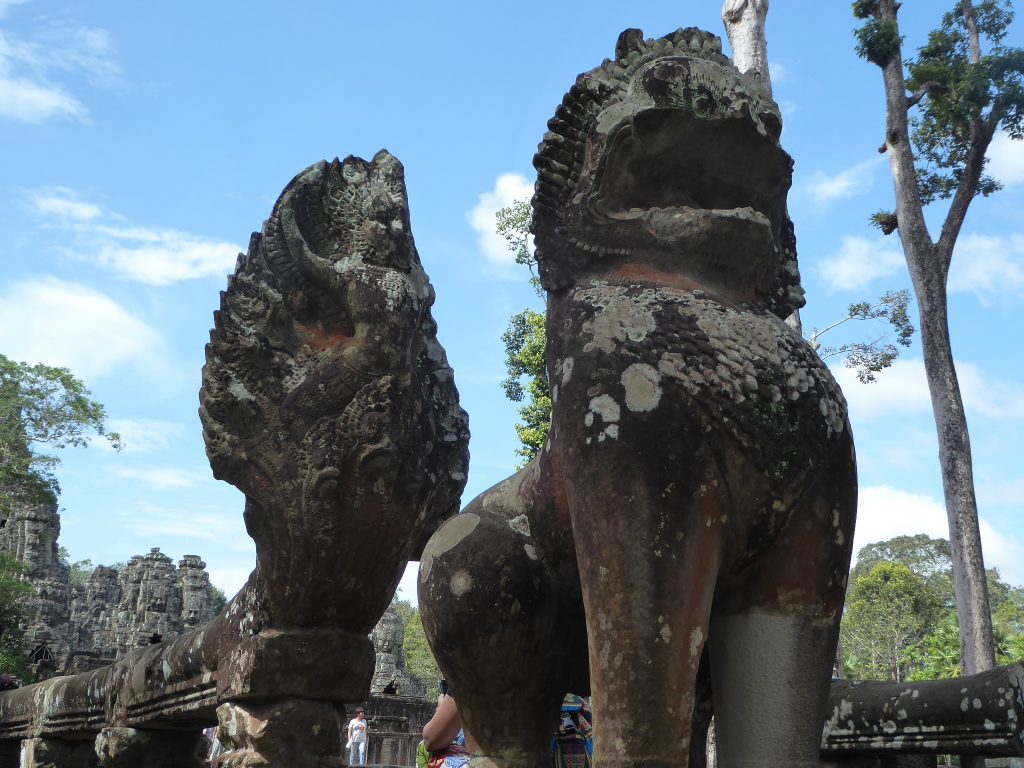


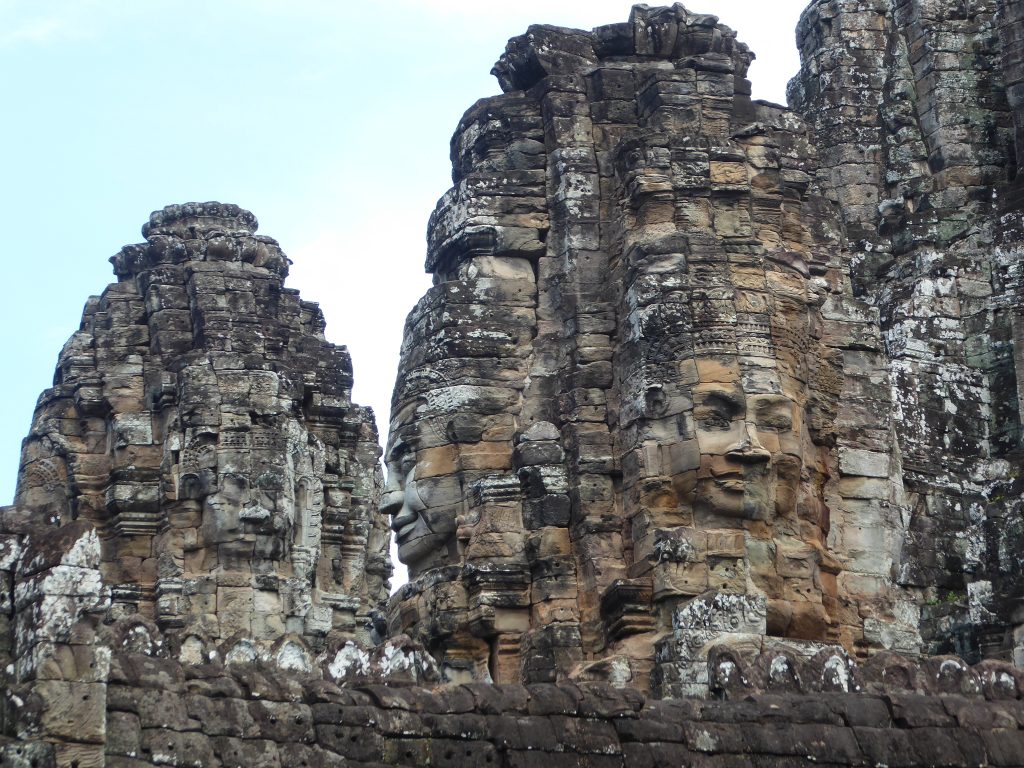






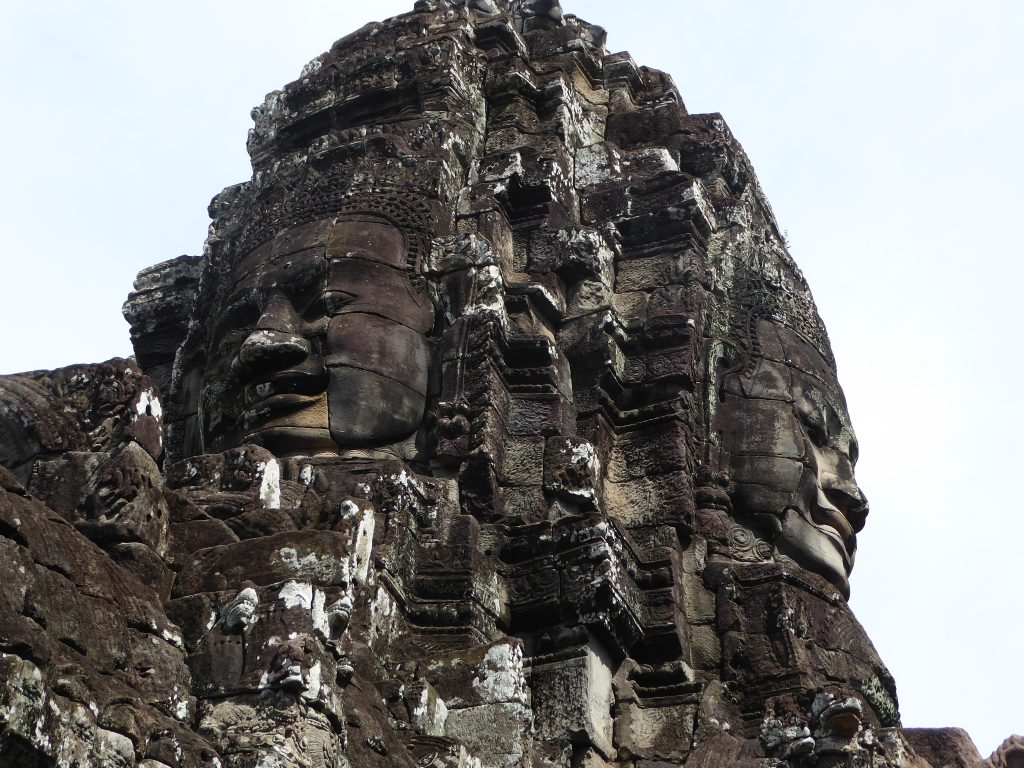

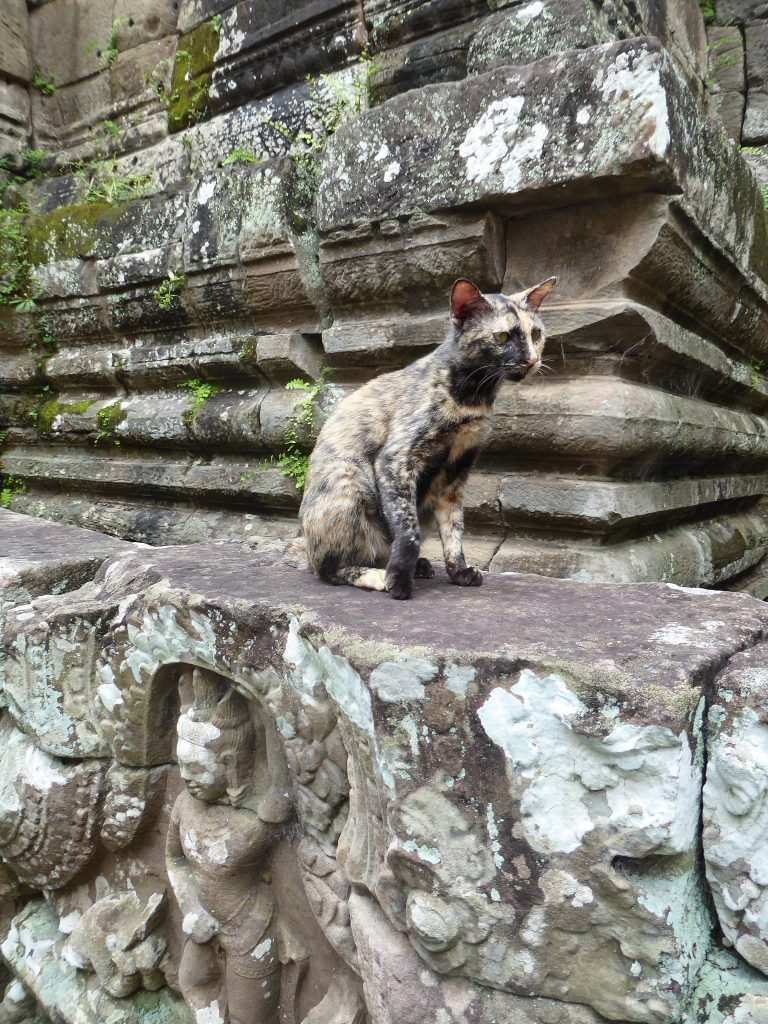
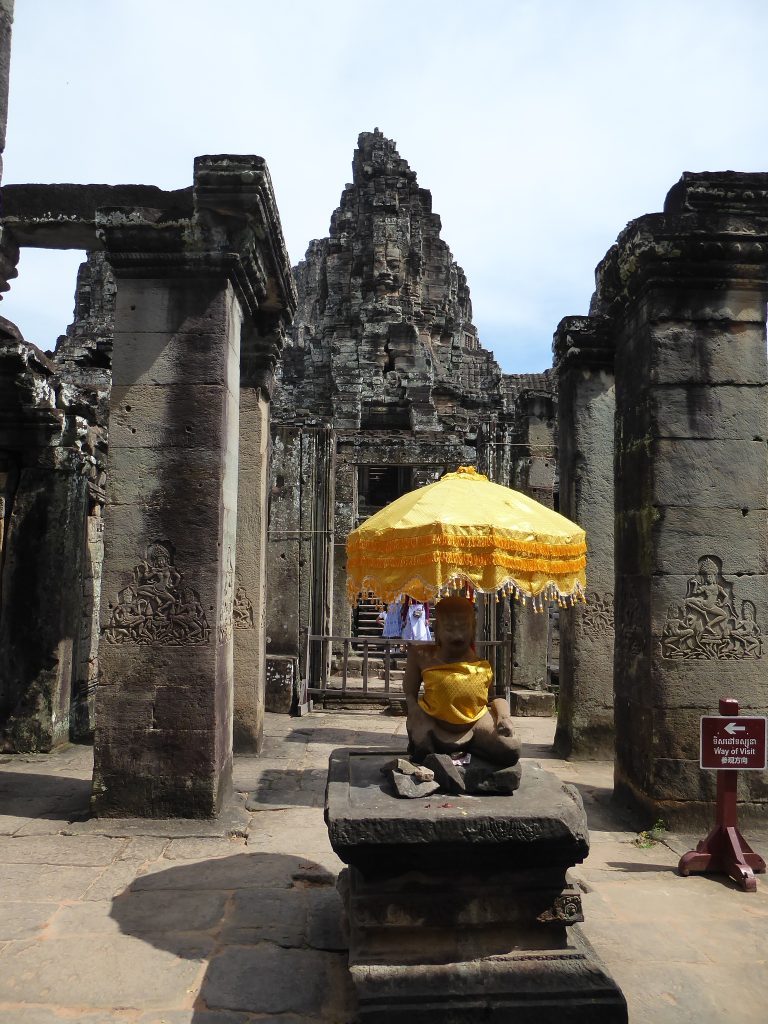
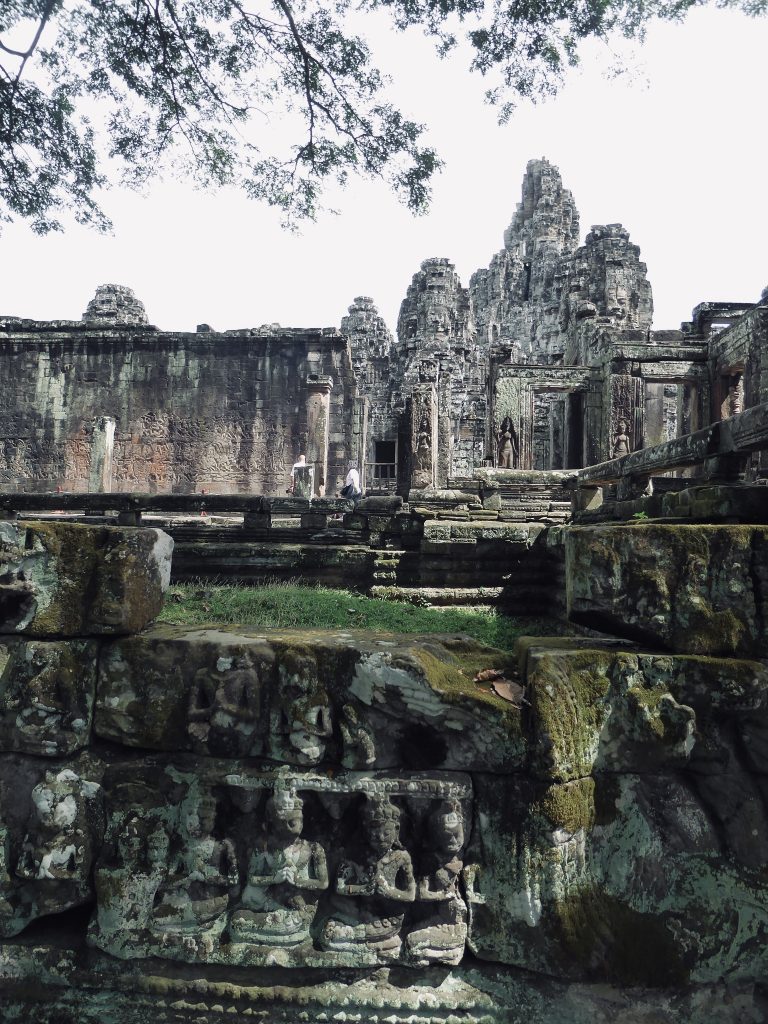
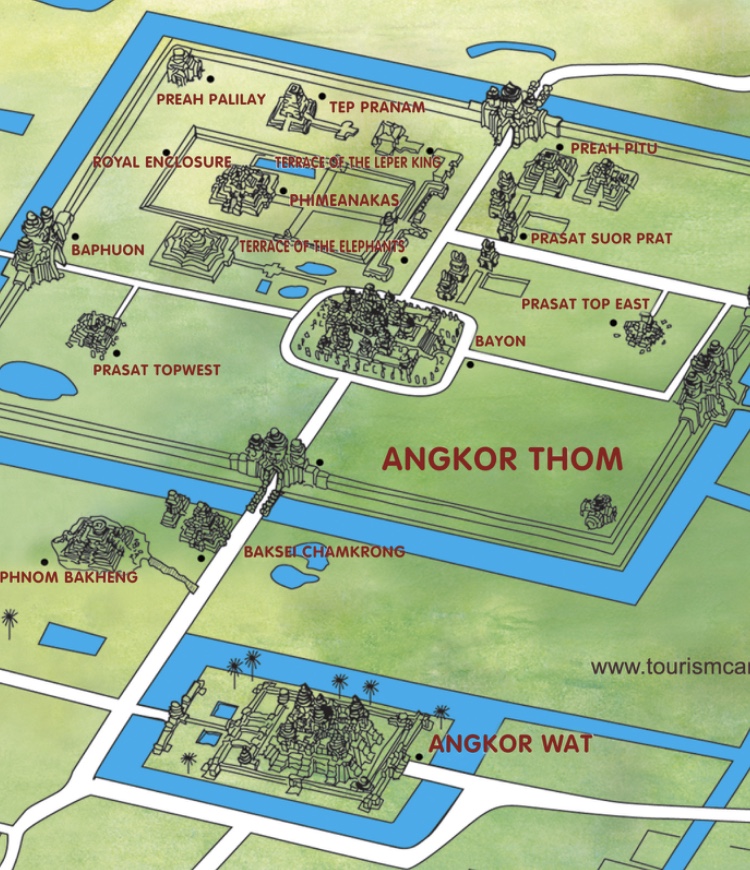
One of my favourite cycle moments… approaching the South Gate towards Bayon. It’s the first time you encounter those faces. Like most temple complexes, Angkor Thom is also surrounded by a moat. The bridge is lined with Asuras (demons) and Devas (deities) pulling the tail of Naga, the multi-headed cobra. This is part of the story “Churning of the Sea of Milk” and can be found everywhere in Angkor.

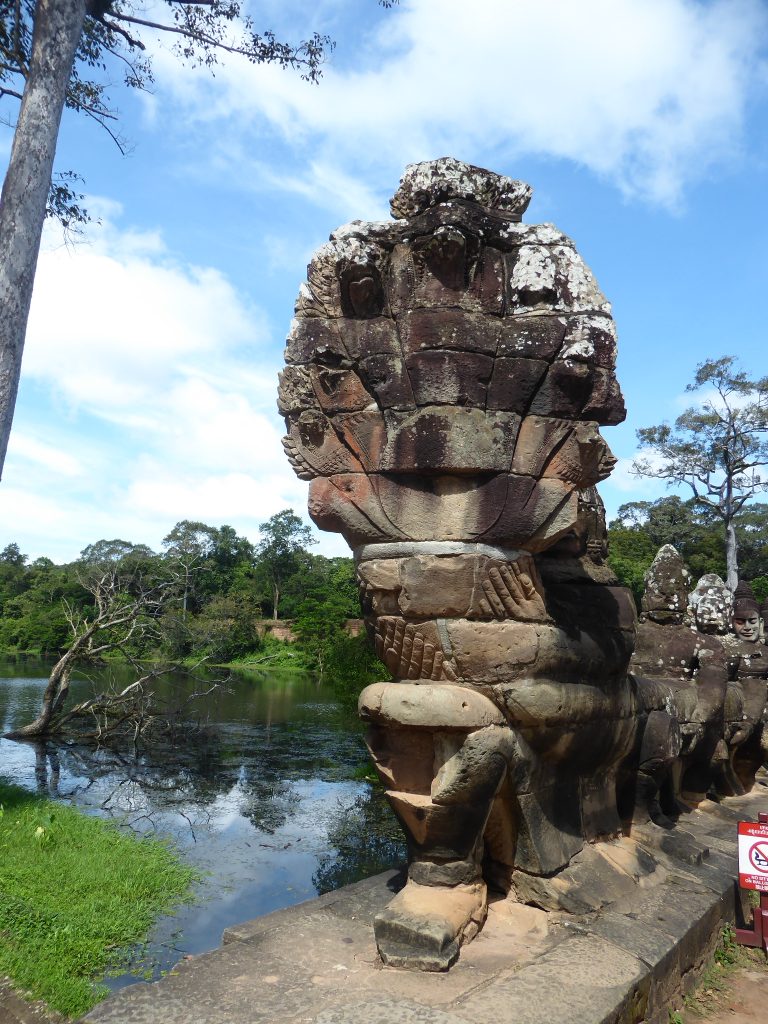
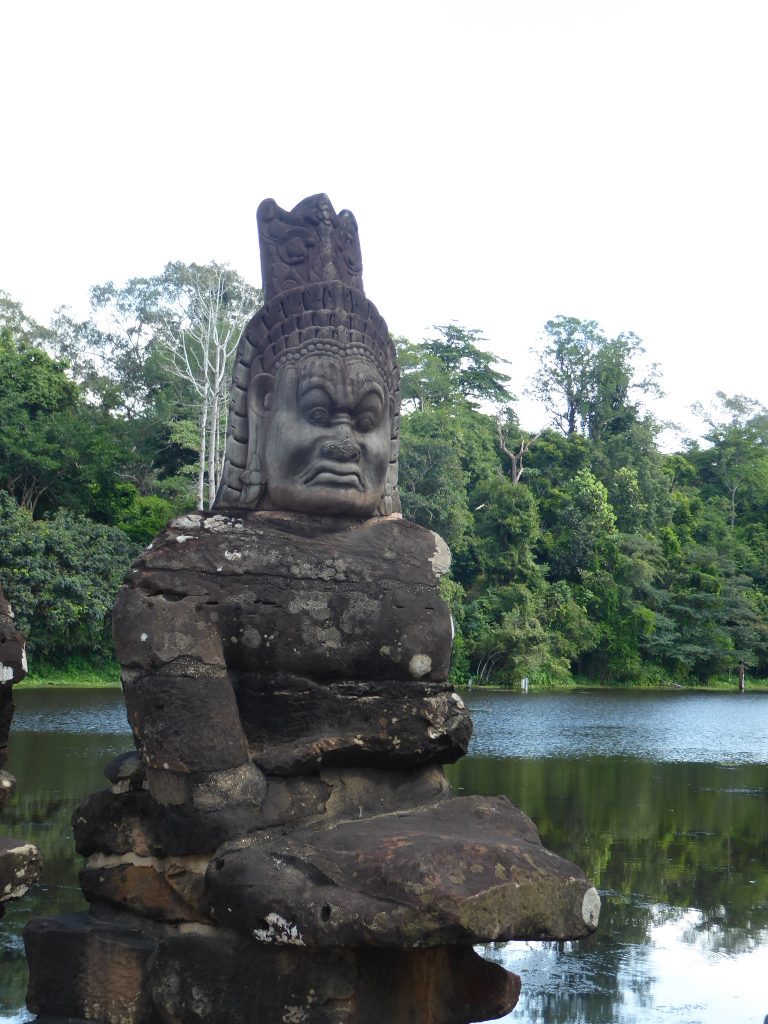
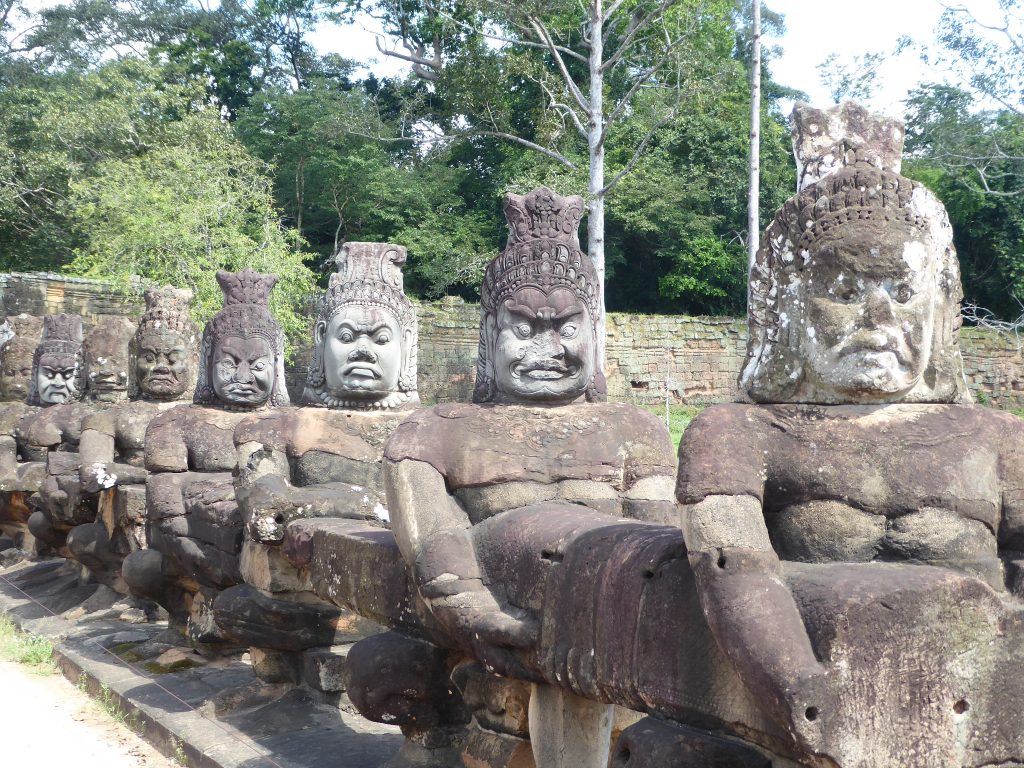


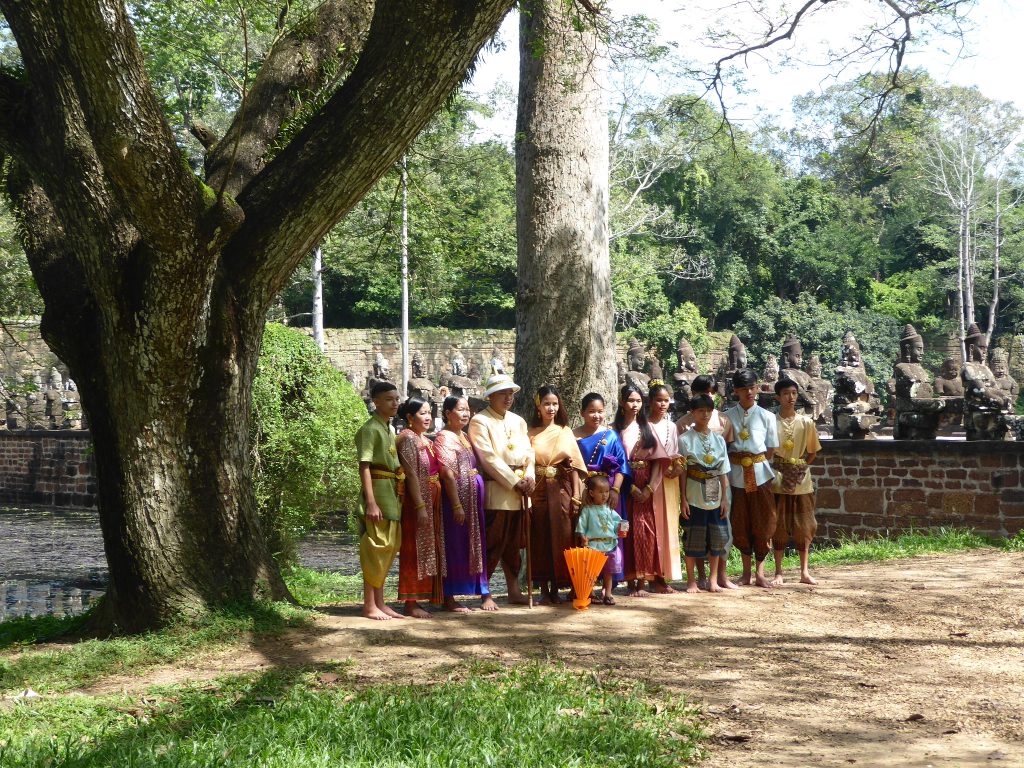
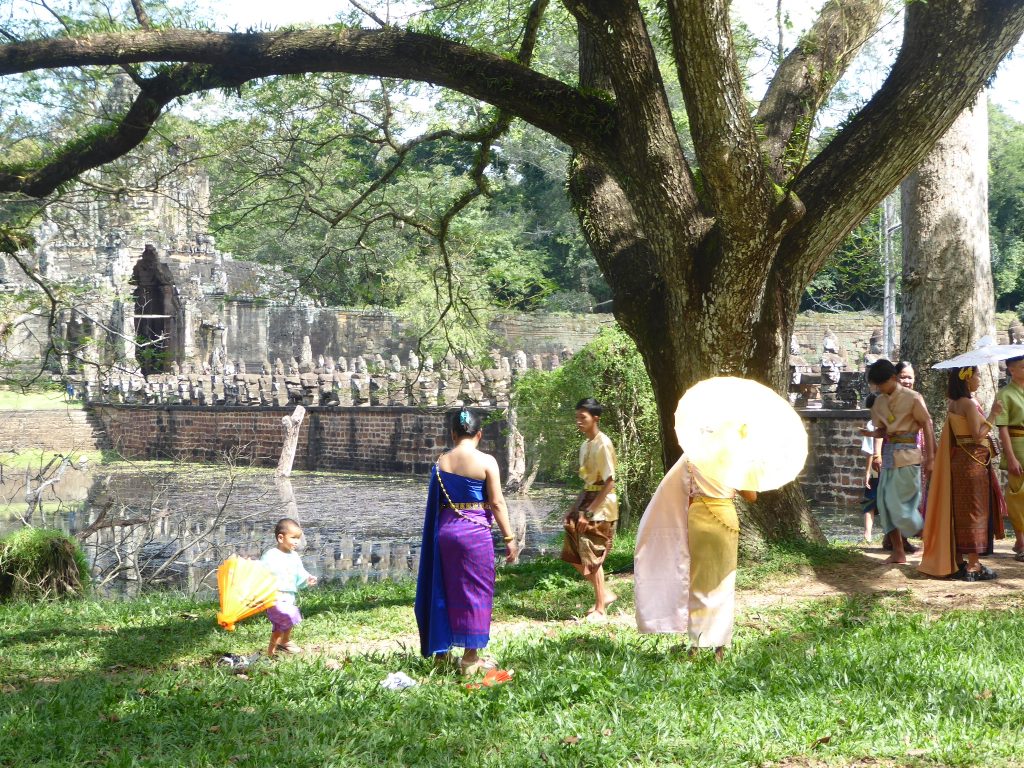


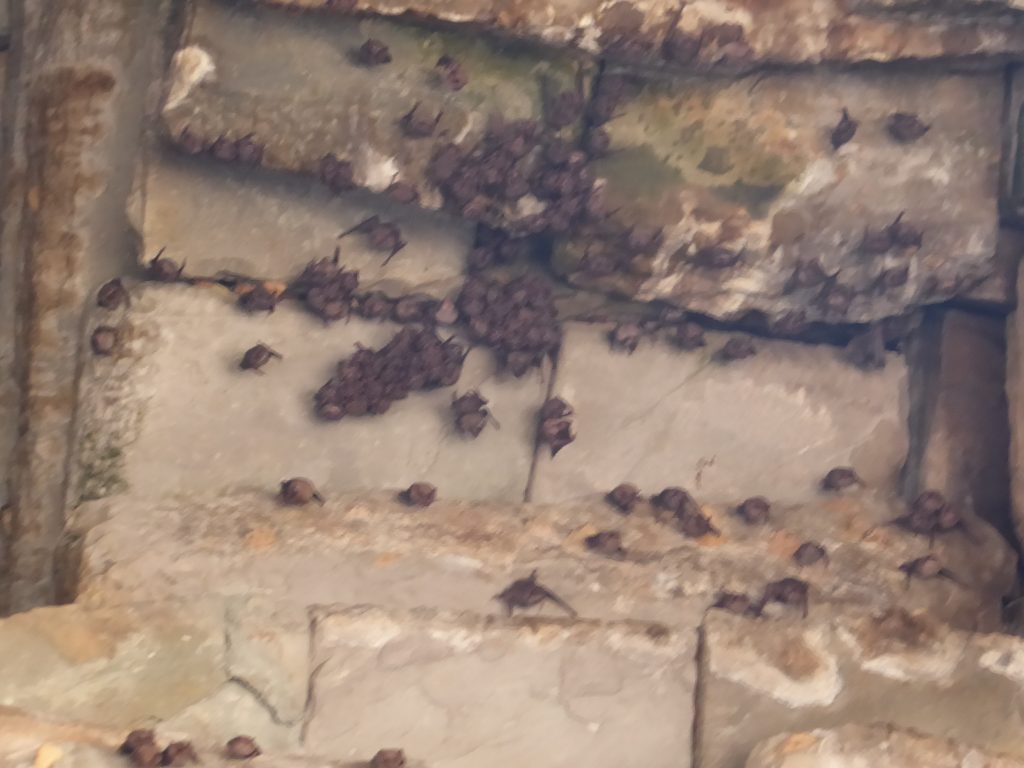

Rats? I hear you cry? Yes indeed, but only a specific type. The African Giant Pouch Rat. Why? Because they save human lives every day.
It is hard to visit Cambodia and not hear about the Killing Fields. As I am not up for negative news I decided to visit APOPO in Siem Reap, a non-profit charity, to find out about their vital work worldwide.
As most of us will have seen Pixar’s “Ratatouille” we know that rats have an extremely well developed sense of smell (and taste). Combined with light weight this makes rats perfect for sniffing out the chemical compounds of TNT (explosive) found in landmines and other explosive remnants of war. They ignore scrap metal making them much faster at detecting landmines than metal detectors. They search an area the size of a tennis court in 30 minutes!
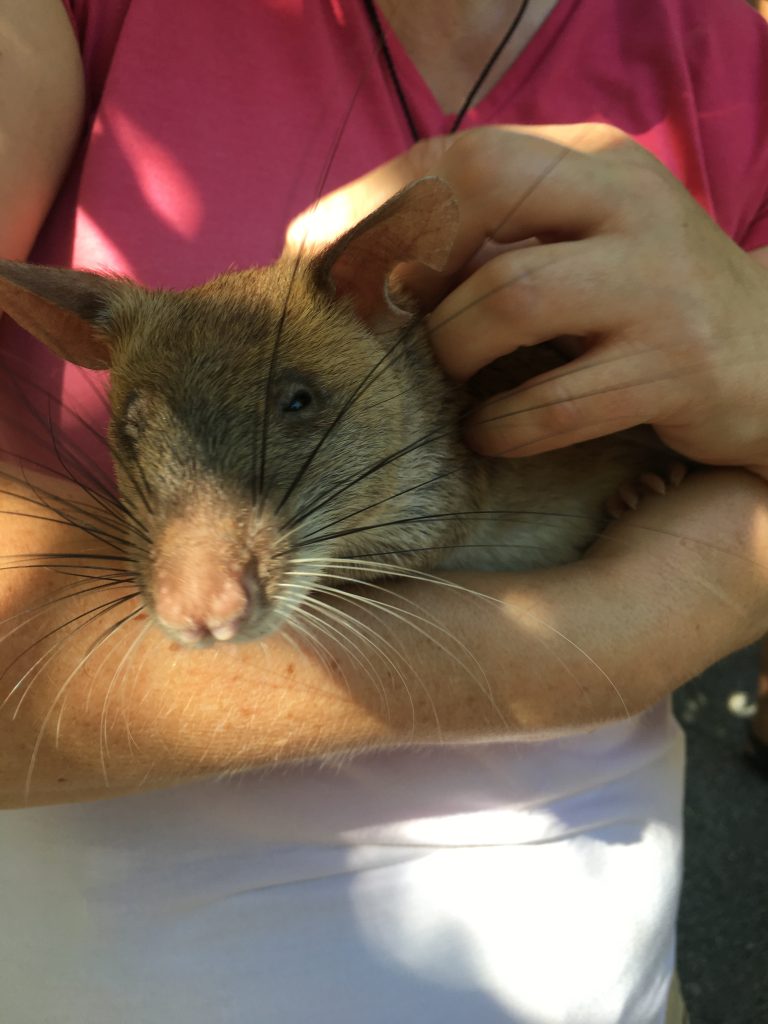
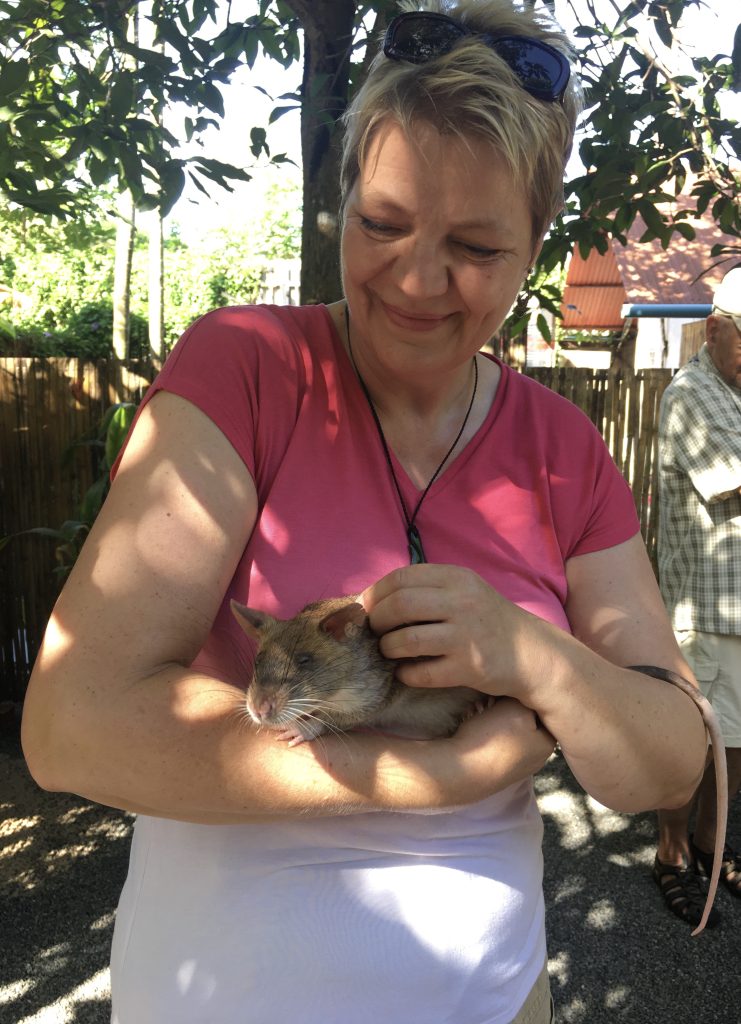
Over 60 countries are contaminated with hidden landmines and other explosive remnants of war, causing fatal accidents, crippling children, and hampering communities from developing their productive land.
We were shown types of landmines and their uses. Our guide told us there is no such landmine as shown in movies. You step on it and boom. The ones with trip wire throw their shrapnel in the air for maximum devastation. Others are small and only supposed to severely injure, so your buddies help you and their forward progress is hampered. How disgusting is this? I was ashamed to be human.
Turned out to be a negative topic after all, sorry, but we now come to the positive informations!
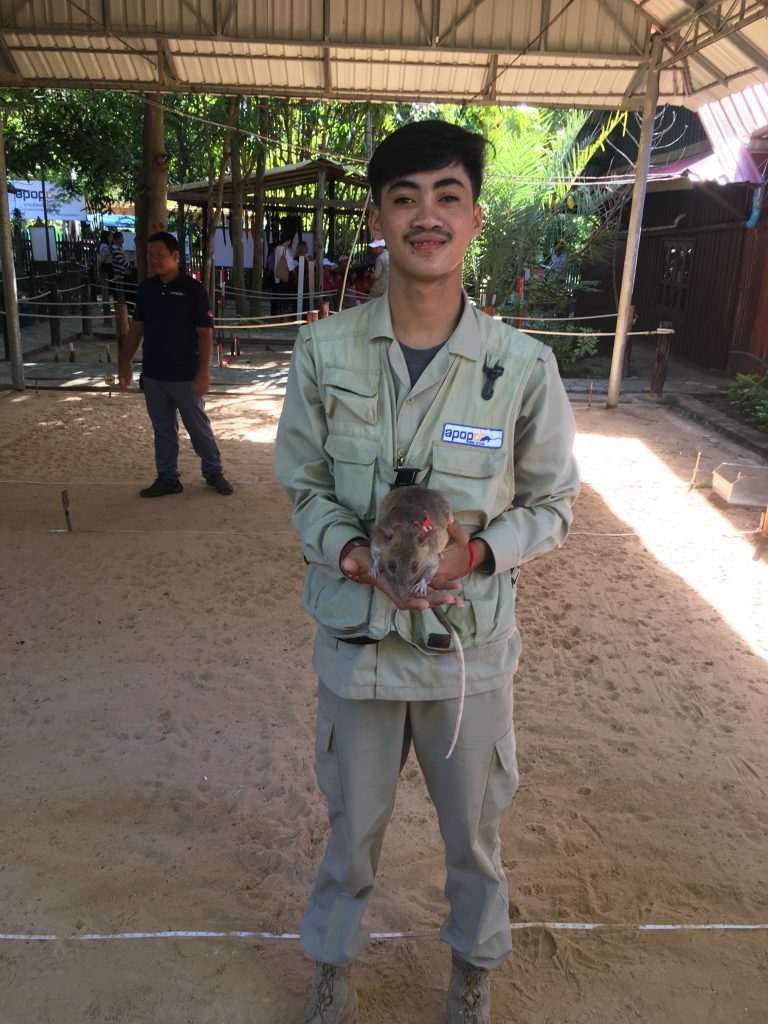
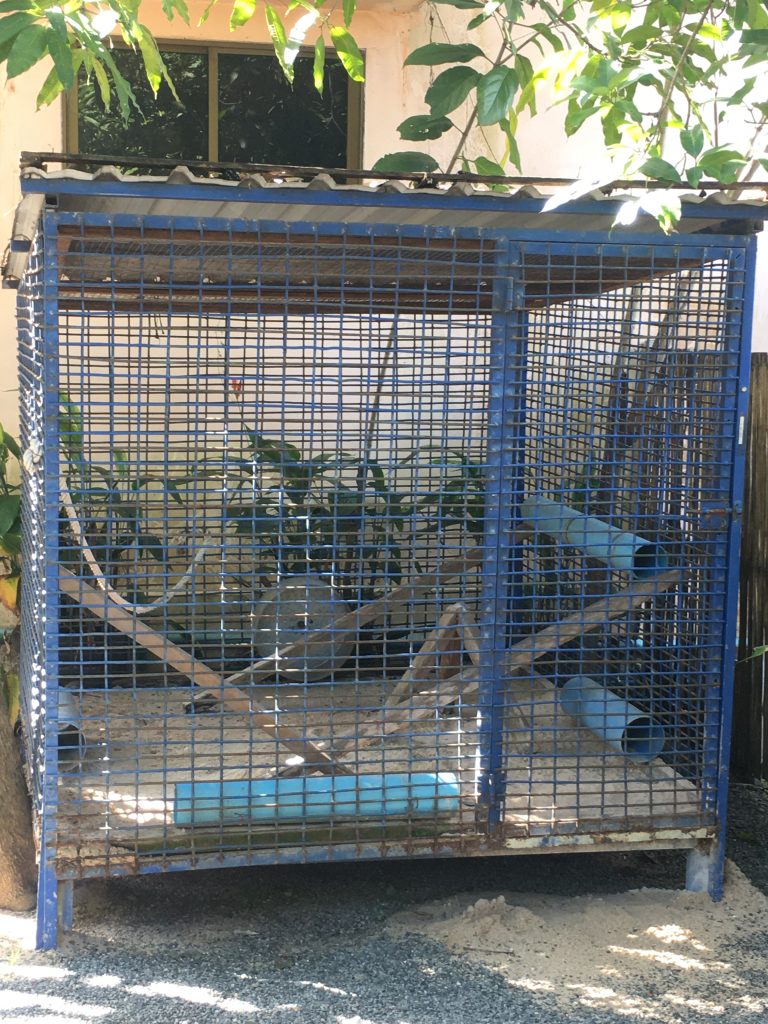
HeroRATs are also used to quickly and accurately detect tuberculosis, the world’s most deadly infectious disease. 10 million new people contract TB every year, 3 million go undiagnosed, and 1.8 million die from the disease. I lost an uncle in WWII to it.
These rats are heroes indeed. One actually received an award from the UK for its services!
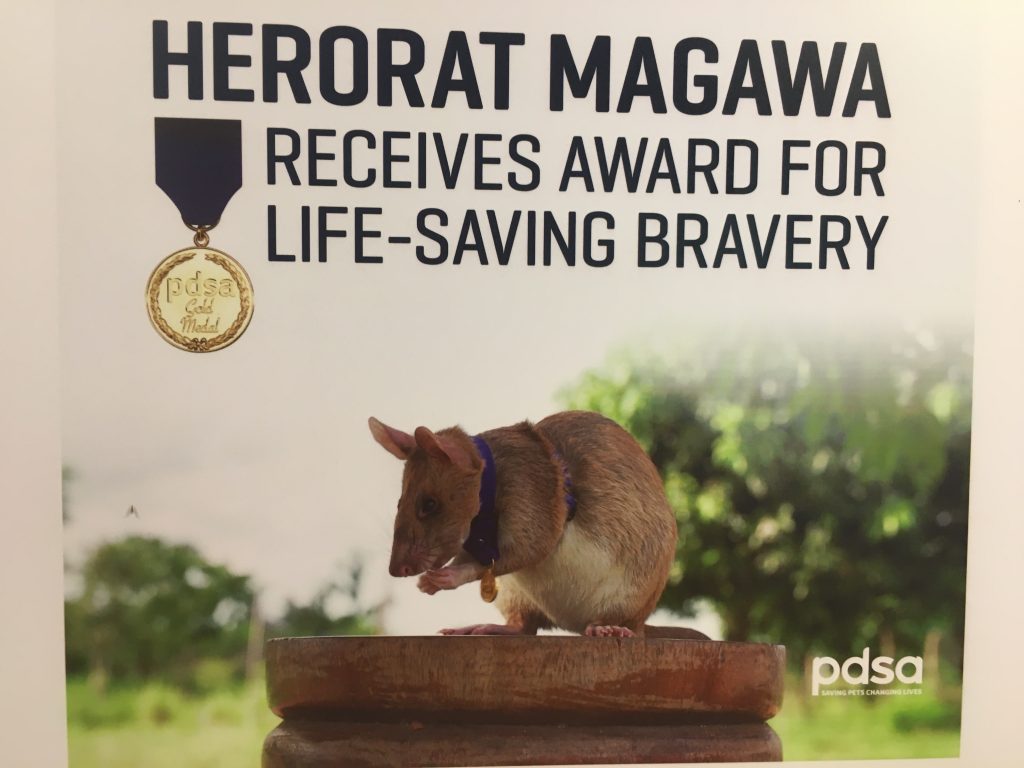
I was impressed and very moved. Just to make up for the cruelty of some humans I paid for having 100 m2 of land cleared, and also vowed not to eat rats, ever.
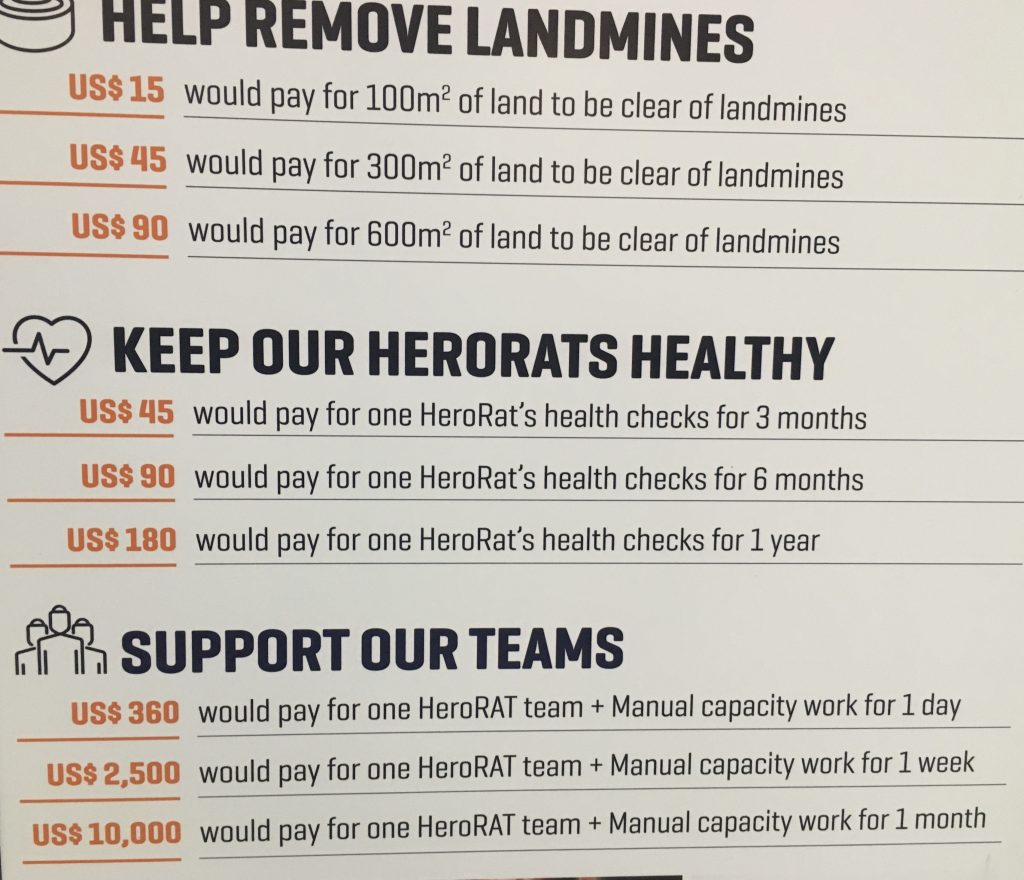
If you want to learn more or contribute towards this cause, see apopo.org for more information.
